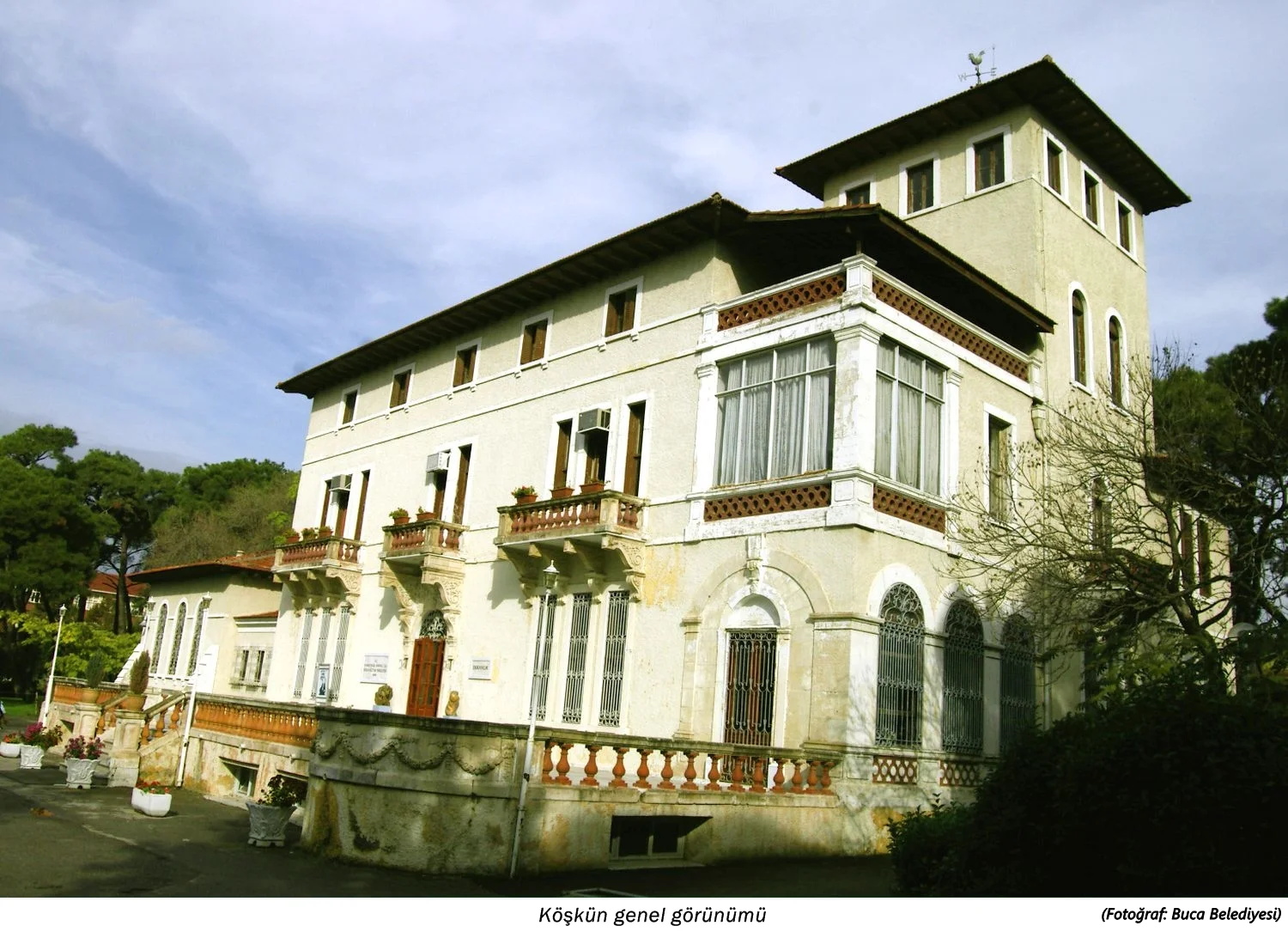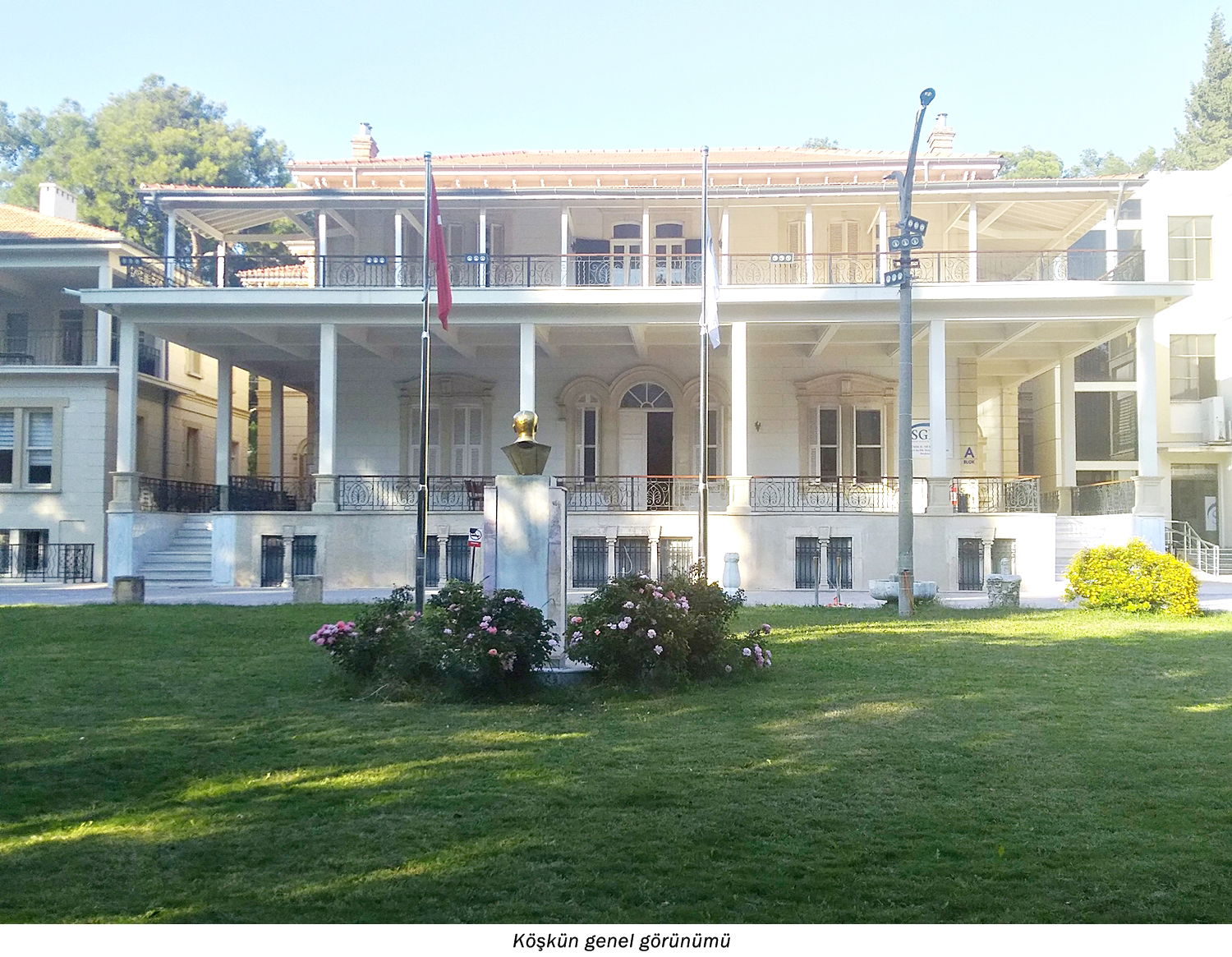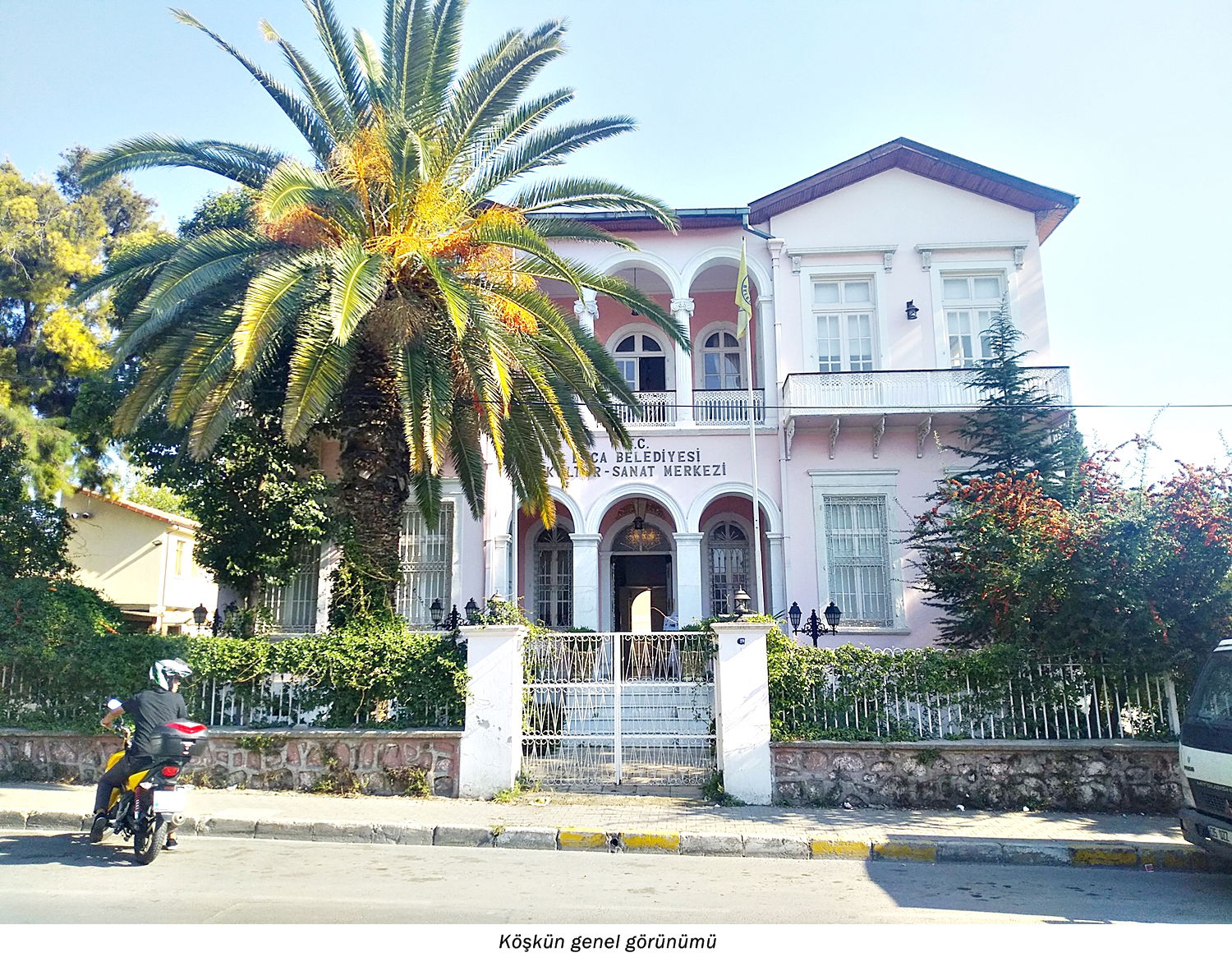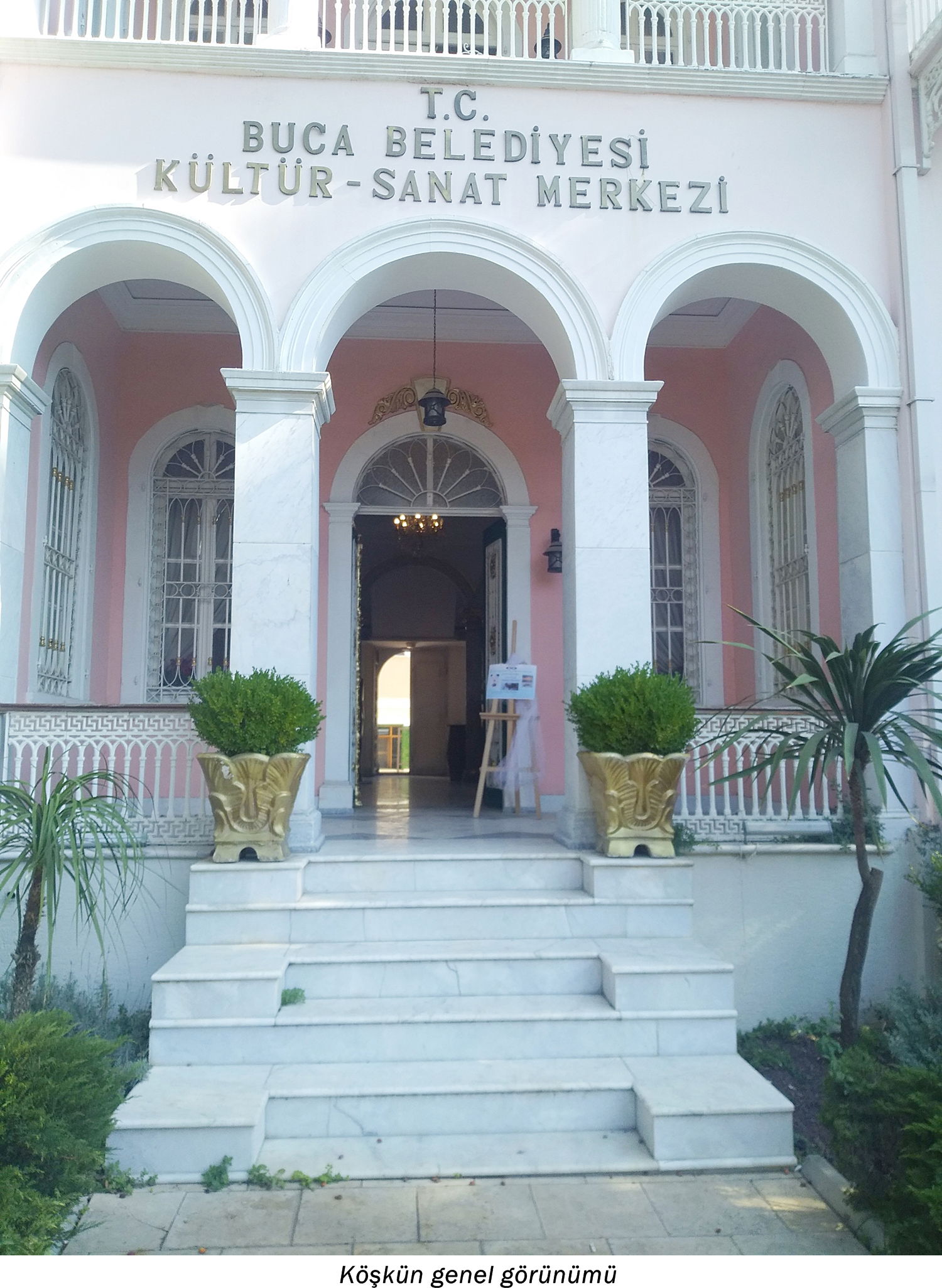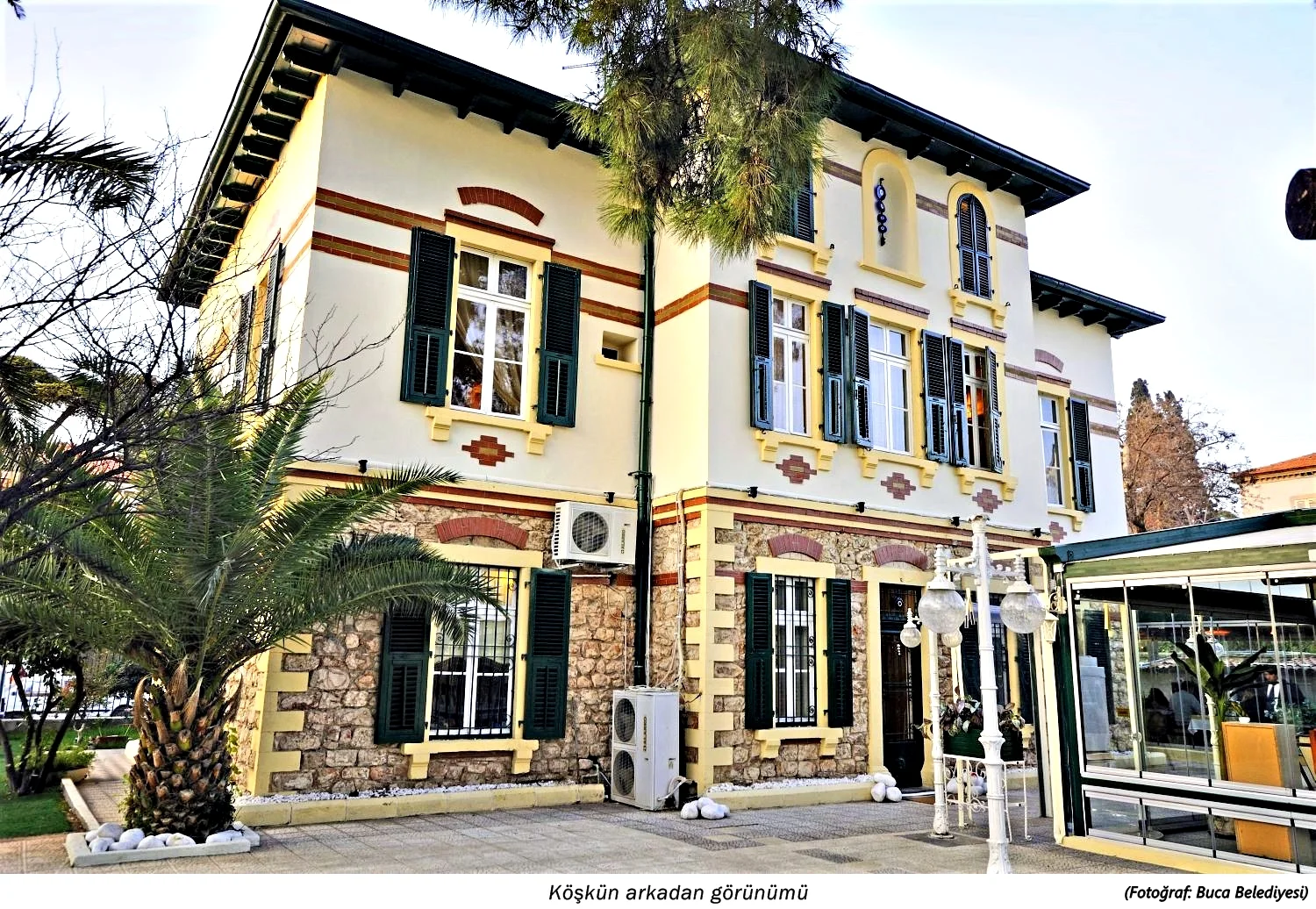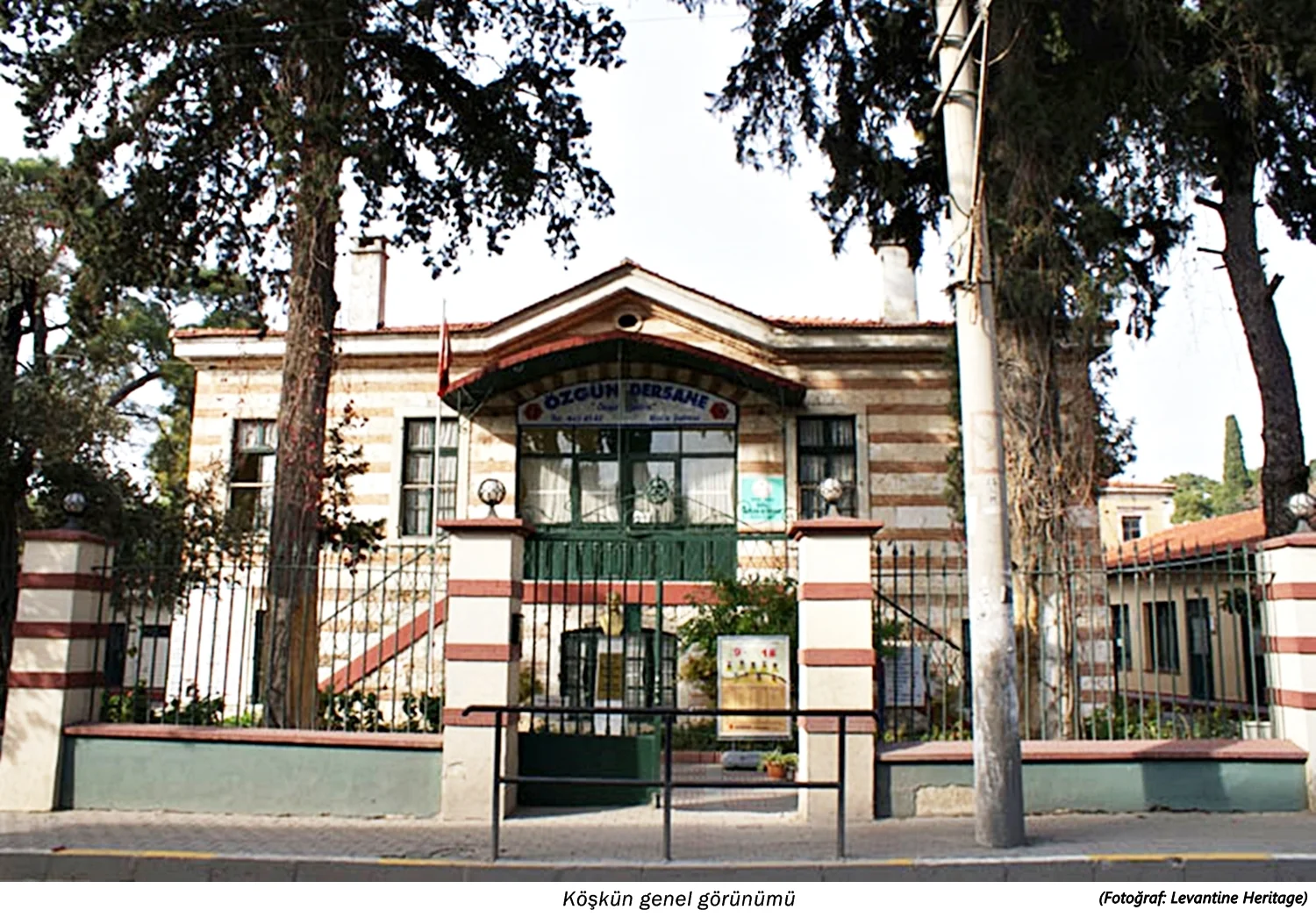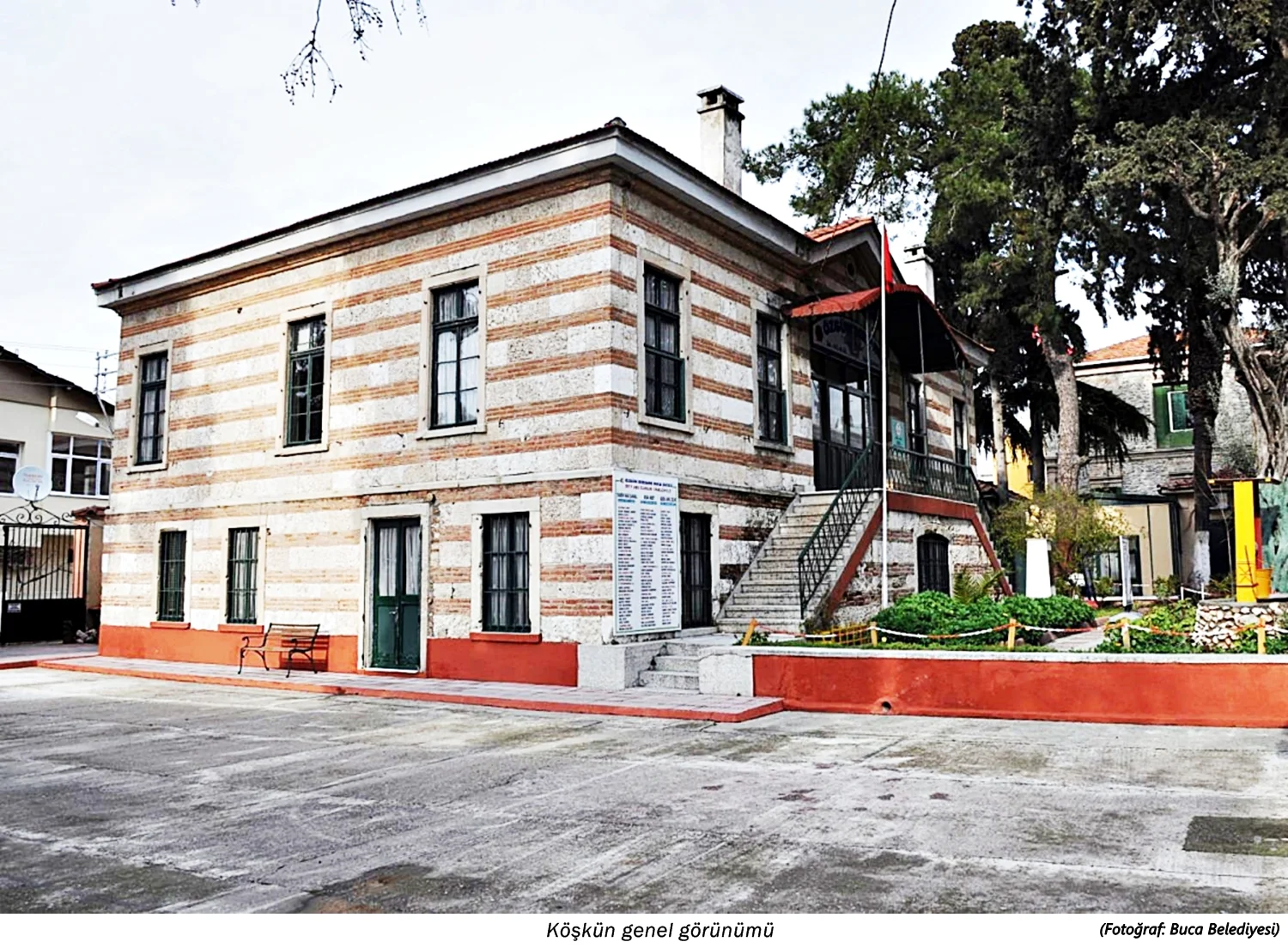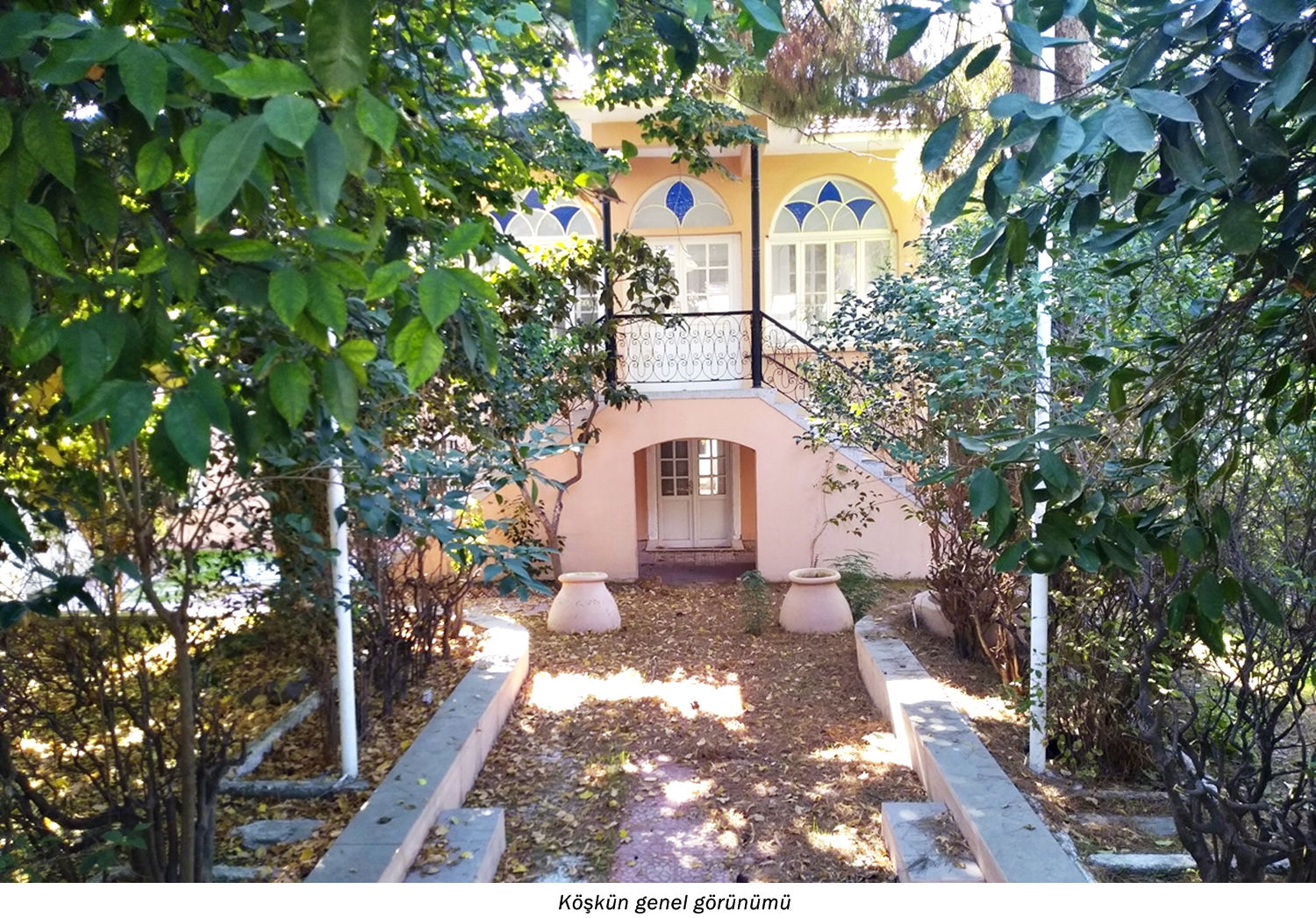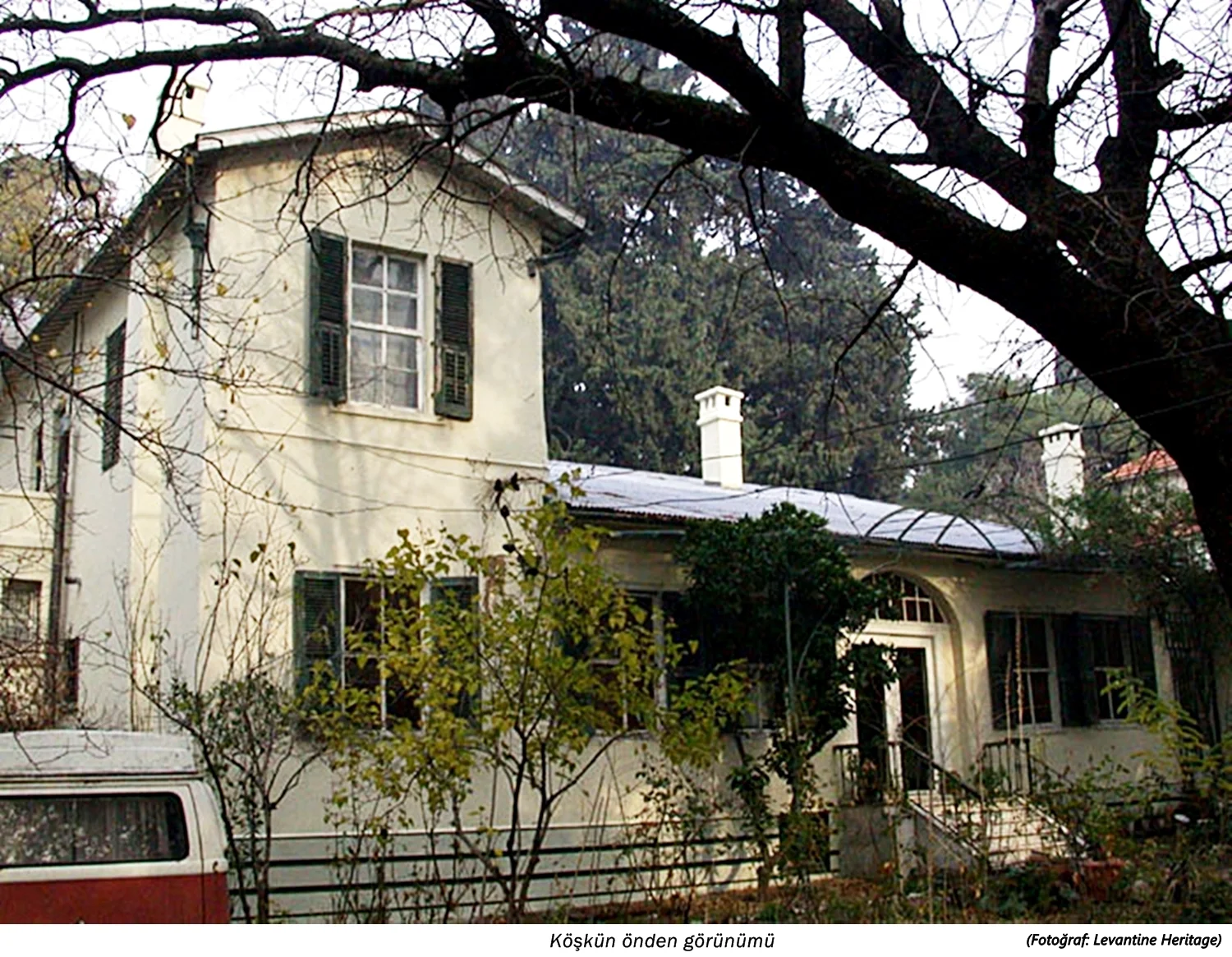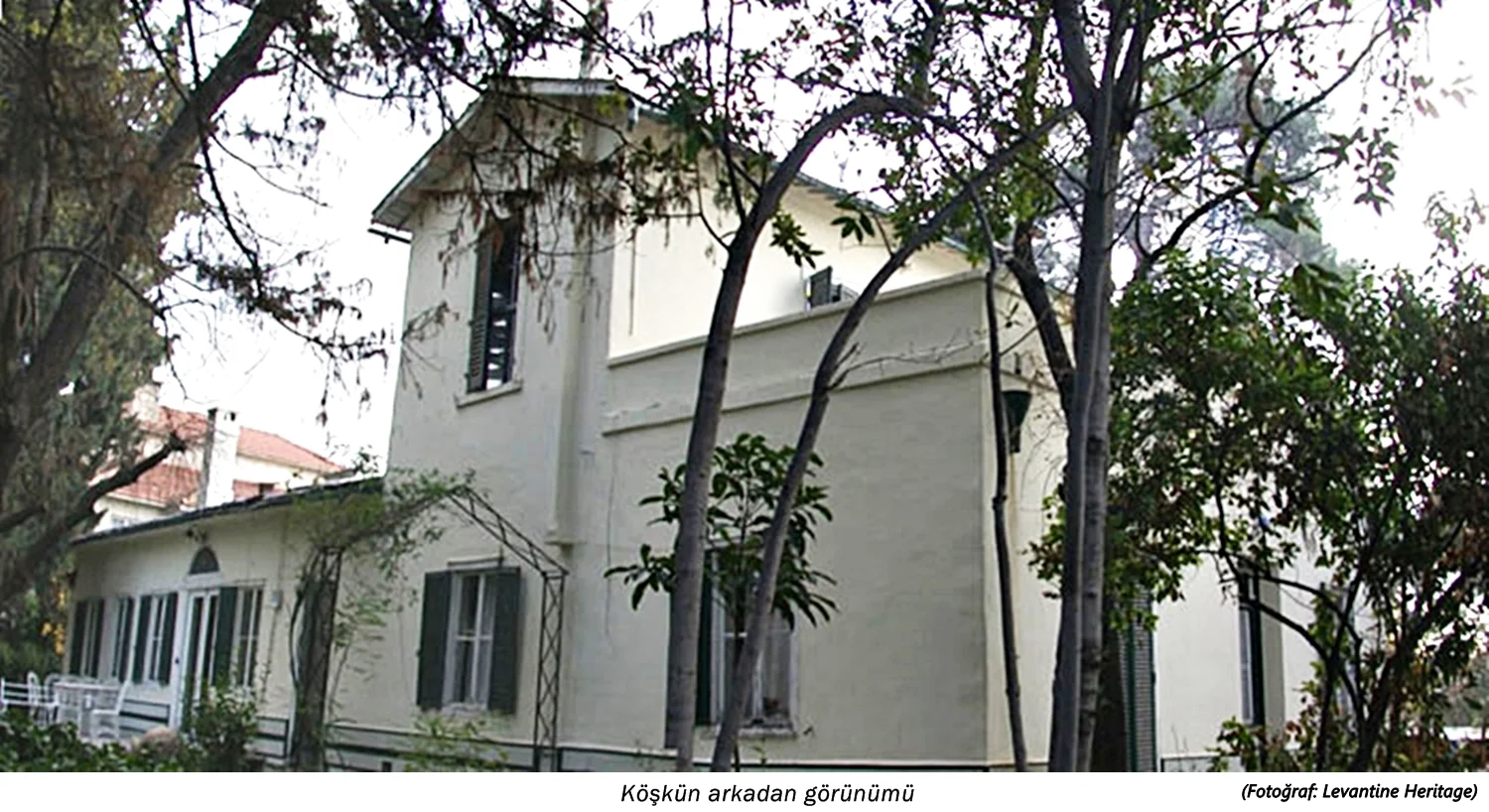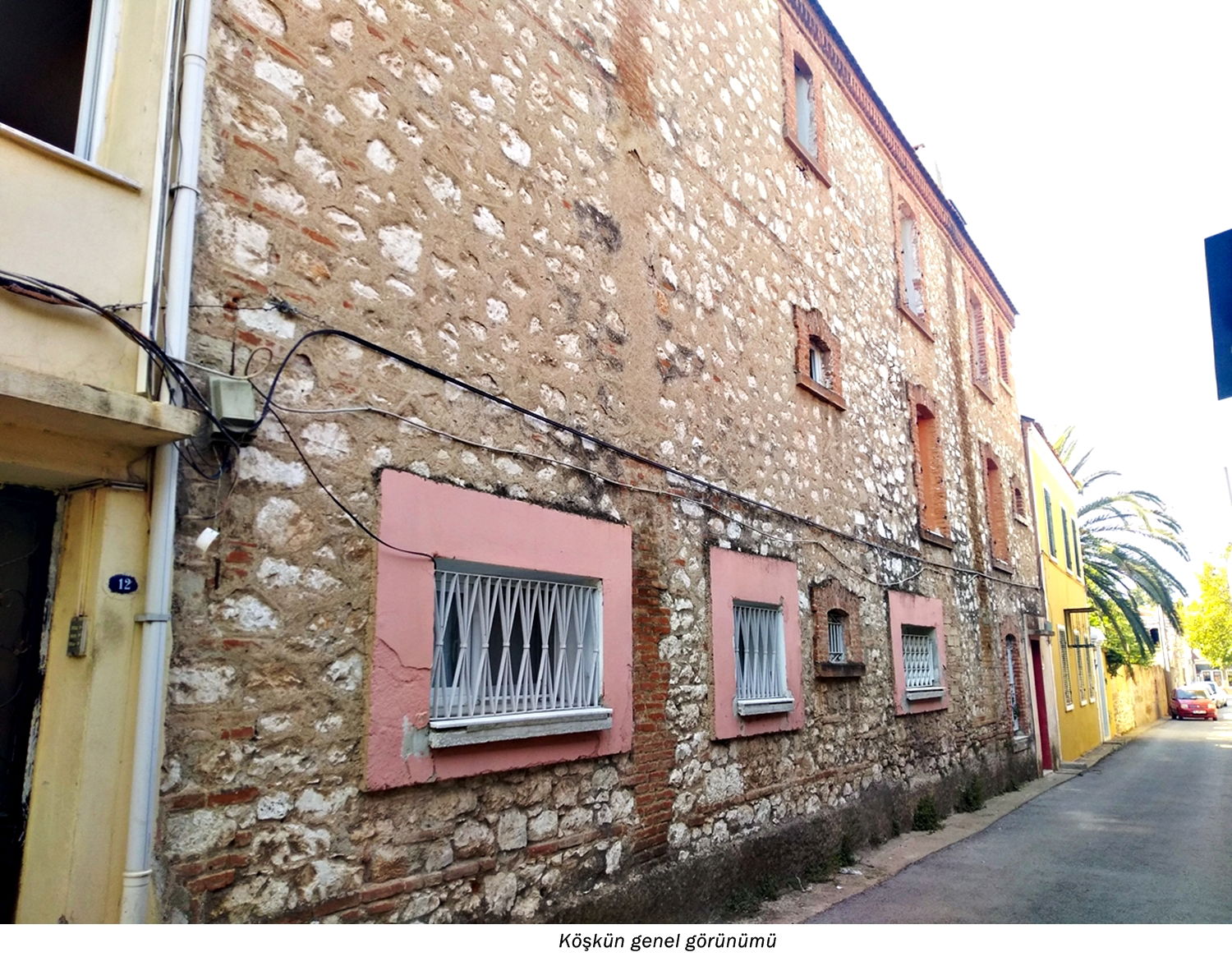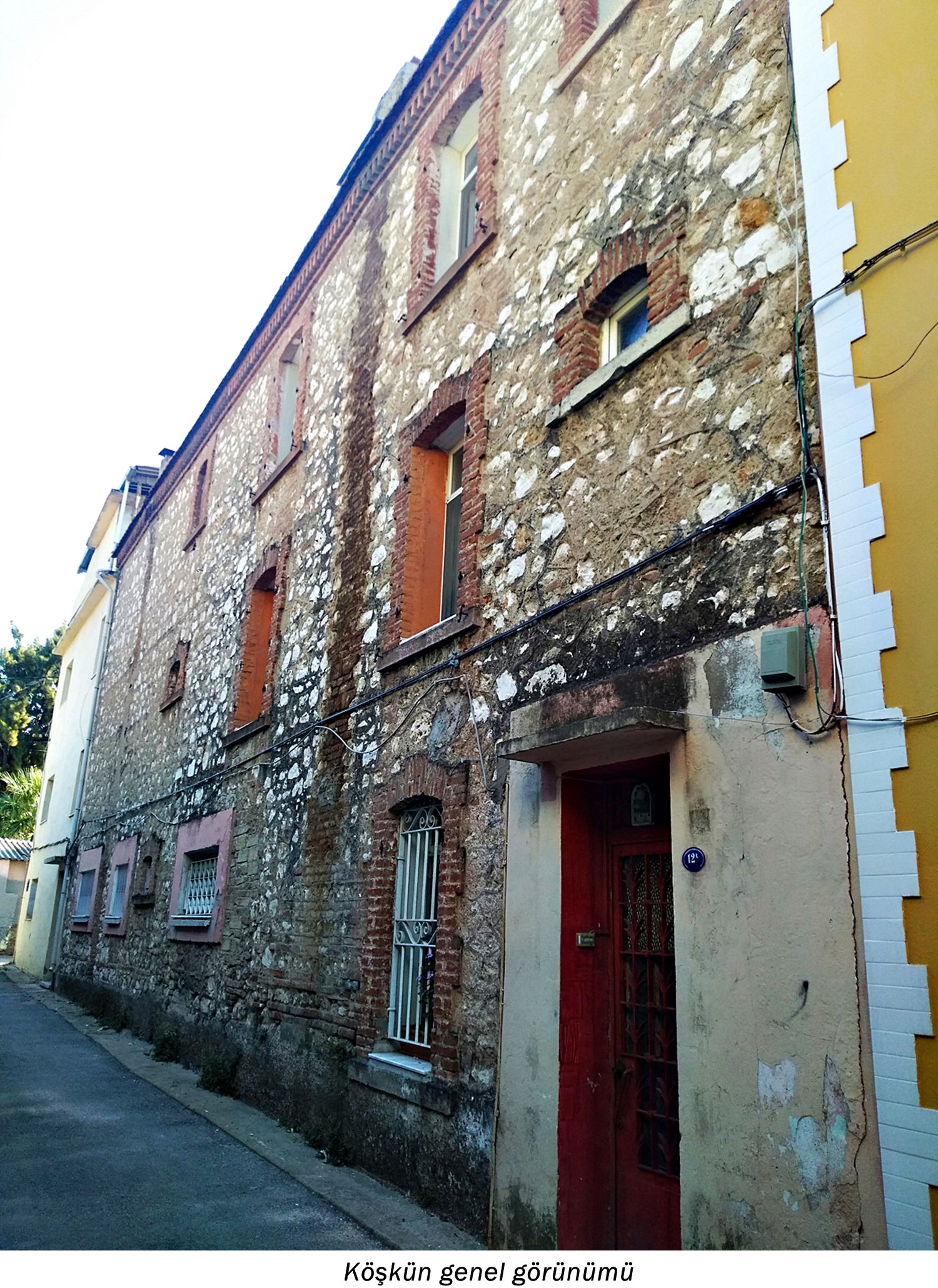LEVANTINE MANSIONS OF BUCA

Izmir's Buca village has become a place permanently inhabited by European families since the 1700s. European families preferred Buca due to its proximity to Izmir, its suitable climate and its predominantly Christian population. Since the 1800s, the migration of European families to Buca accelerated and a Levantine (the name given to Europeans who permanently resided in the Middle East) culture began to emerge in Buca. Levantine families established kinship relations with each other by marrying and giving daughters, and they also established limited relations with the Greek population in the village. It is known that Greek families such as Baltazzi and Sevastopoulos also established close relations with the Levantines. In addition, the Greeks mostly worked alongside the Levantines in their daily work, taking on jobs such as guards and servants.
Levantine families expanded their influence by establishing relationships not only with the Christian population but also with the leading administrators of the Ottoman Empire. Thanks to the capitulations, they had extensive privileges and acquired large lands around the Aegean Region. In addition, these European families were the ones who established the first factories in Anatolia and provided the capital. In 1863, Sultan Abdülaziz came to Buca and with the efforts of the Levantines, horse races started to be organized regularly in Paradiso, and a few years later (1872) the Buca line was completed and the railway from Izmir to Buca was brought. It shows how great an influence they had in Ottoman society. After the railway was brought to Buca, Buca became a truly European town. Many wealthy Europeans, especially British, American, French, Dutch and Italian families, with their houses with large gardens, moved to Buca permanently.
It is seen that the Levantine population has increased in Buca since the early 1900s. The increasing weakness of the Ottoman Empire caused the need for foreign capital and the Levantines gained greater importance. With the start of the First World War, the weather begins to change. The British Empire, France and Italy are on the opposite side, and it is known that Levantine families from Buca were also fighting in the armies of the Allied Powers. However, many European families continued to stay in Buca during the war. However, the Greek Occupation disrupts the affairs of the Levantines and the Levantines do not welcome the Greek Occupation. The biggest reason for this is the disruption of trade of the Levantines, who already had a great advantage and trade due to the capitulations, during the occupation period and the new administration that came to Izmir. When it became clear that the Turkish Army would take Izmir in September 1922, many European families left Buca. There are very few Europeans staying in Buca. After the war, relations with the Kemalist administration, which took control of the country, were not as bad as feared. Many European families return to Buca. Kemalist Turkey needs the investment of foreign capital and they welcome foreign investments. However, when the private sector could not reach the desired level despite the incentive policies and the economic difficulties that came with the 1929 global crisis arose, the Kemalist government changed its economic policy and adopted a statist policy. Many private organizations are nationalized. Of course, this situation does not suit the Levantines. Starting from the 1930s, the European population in Buca began to decrease rapidly and Buca began to assume the identity of a Muslim-majority settlement for the first time. The Levantine population, whose numbers gradually decreased in the following years, moved away from Buca, which lost its summer resort appearance after the 1970s, and either went abroad or to relatively calmer and more orderly places such as Bornova, Karşıyaka or Alsancak. Of the Levantines from Buca, whose number did not exceed 50 at the end of the 1990s, only one Levantine family remains living in Buca today.
In this article, the Levantine mansions in Buca will be examined closely and information will be given about the families who lived in these mansions. The mansions in question are mansions in Buca that are in good condition and known by many people. Apart from these mansions, it should not be forgotten that there are many historical Buca mansions that have not survived to the present day or are in ruins today.
– FORBES MANSION –
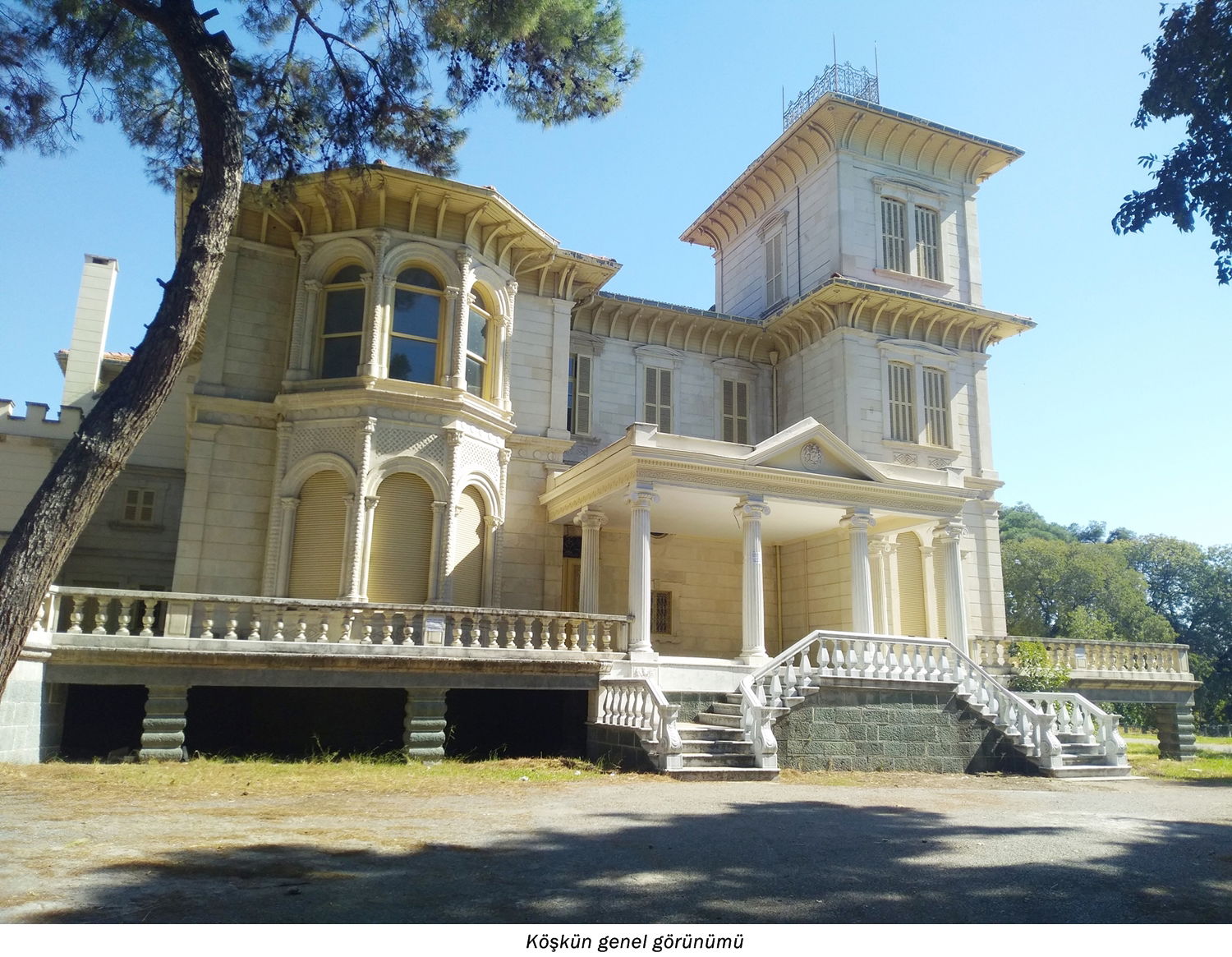
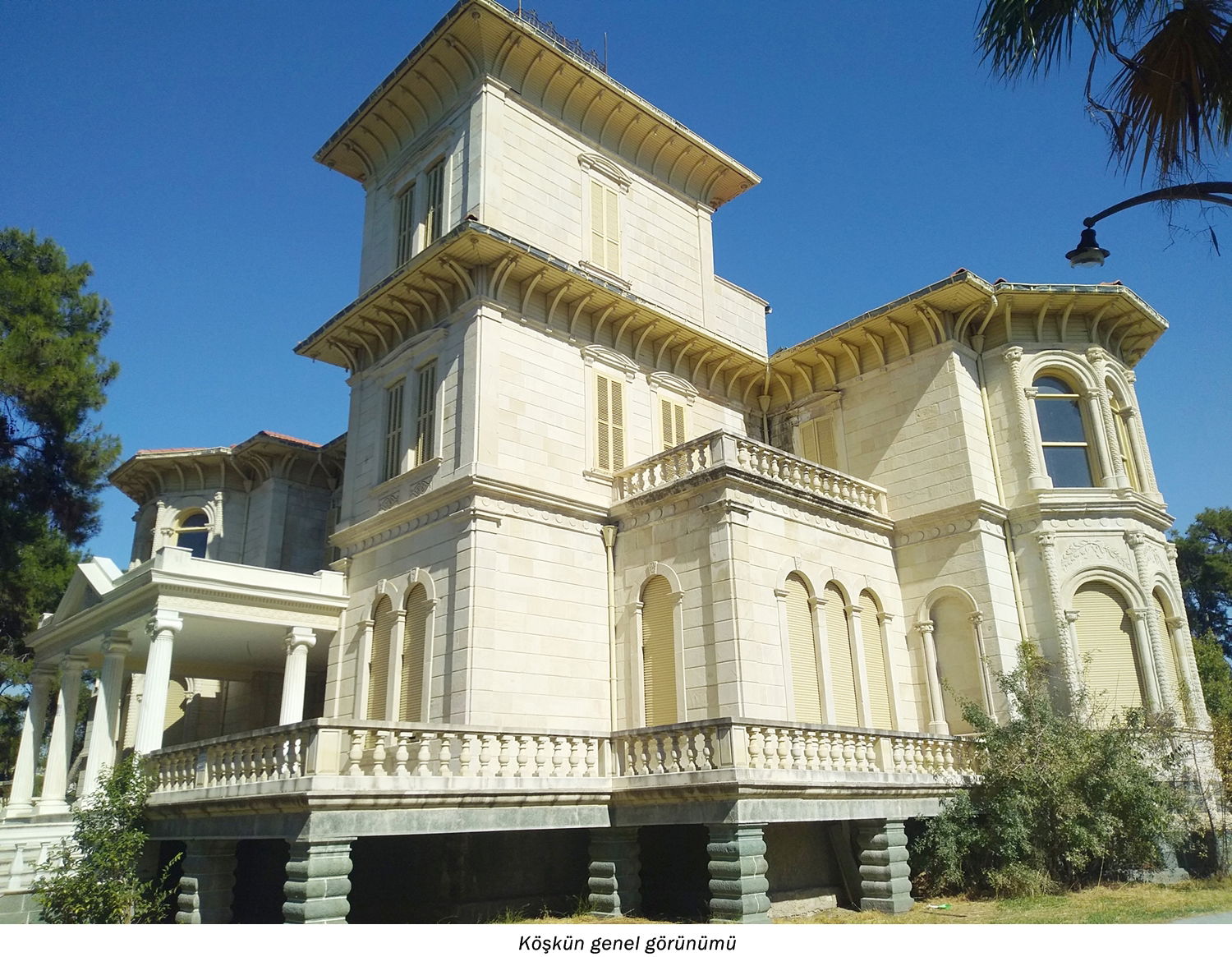
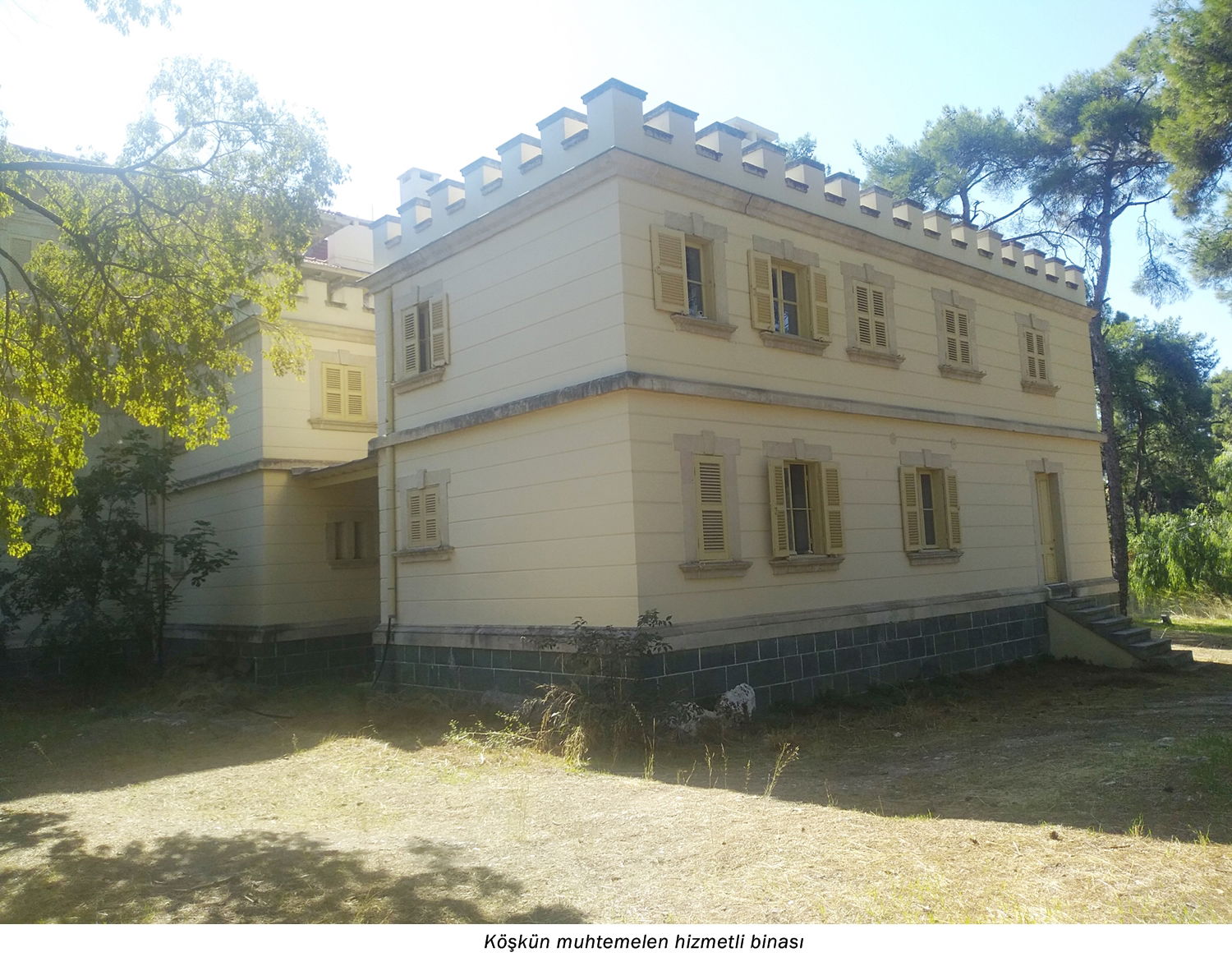
Forbes Mansion is undoubtedly the best located mansion in Buca in terms of its location. Although Buca cannot be viewed from around the Forbes Mansion today due to trees, those who owned the Forbes Mansion in the past had the opportunity to watch the Buca Plain from all four directions.
It can be said that the Forbes, originating from the Angus region of Scotland, came to Buca in the mid-1800s. In 1850, Robert MacAndrew, owner of the MacAndrews Ship Company, which also had business in Izmir, thought that licorice grew near Izmir and that he could make money from it. He sends his son William MacAndrew to Izmir to do research. William Forbes also joins to accompany him. In the same year, MacAndrew & Forbes Company, which still exists today, was established in Izmir. Other members of the Forbes family also settled in Buca over time. They add to their wealth by trading antimony ore and licorice. William Forbes is the uncle of David Forbes, who built the Forbes Mansion. He also had a house near the station, but it is not clear exactly where.
It is thought that the first house of the Forbes family was the old mansion on 117th street, known as the Egyptian Mansion. The family, which probably used this place until the 1900s, had this mansion built in 1908. It is read on the inscription at the entrance of the mansion that the mansion burned down in 1909. There are legends about why it burns. The most well-known is that the mansion was deliberately burned down due to a love affair in the Forbes family, but there is no evidence to support this claim. The most realistic story is that the mansion was deliberately burned down by a warrior. The mansion was rebuilt in 1910, but interestingly, things did not go well for the Forbes family again. Around 1920, when they realized that things were going to get worse for them, they moved their headquarters to Athens. Records state that when Izmir burned in 1922, their company, Forbes-McAndrew, completely terminated its activities in Izmir. As can be seen from here, the Forbes family could not even use their mansion properly.
According to Feyyaz Erpi, the building was actually built amateurishly, without expressing a certain style, due to the decisions of those who built the mansion. The geometric forms do not fit together and there is a haphazard composition. The structure has two advantages. The first is that it is located on a hill and the tower-shaped corner block at the top of the building. The second advantage is the quality of imported materials and the exquisite workmanship of stone and wooden materials. Thus, it was disguised as a ruling class, similar to medieval feudal castles. It also shows similarities with the Hidiv Abbas Hilmi Mansion in Çubuklu, Istanbul. Feyyaz Erpi also says that the garden of Forbes Mansion, unlike other Buca mansions, was turned into a completely natural forest area and no careful gardening was done. However, they don't seem to have much time for this. They could only use the mansion for ten years.
After the Forbes family, Marcel Russo and his family lived in the mansion for a short time. It is known that it was subsequently inhabited by the Whittall family between 1942 and 1952. We can guess that the hill and the mansion remained intact during this period, but the course of events changed when its ownership passed to SSK in 1951. In the 1950s, all the splendor of the mansion was destroyed when a hospital was built just to the southwest of it, as if there was no other place left. Although restoration has been on the agenda many times, no general maintenance has been carried out yet. The mansion was allocated to the Ministry of Culture and Tourism by SSK in 1996 for 49 years, but only simple repairs were carried out during the 3-year period. The roof of the mansion was repaired and plastering was done in certain areas, but the restoration could not go beyond changing some of the floor boards.
It is also useful to mention two misconceptions about Forbes. The first of this information is the claim that the Forbes family initially wanted to bring the railway line in front of their own house, but later the railway line was extended further to the Rees Mansion. The train line came to Buca in 1872, and both Rees and Forbes mansions were built after 1890. So this claim does not seem possible. The second misconception is that the Forbes family has something to do with the world-famous Forbes. There is no connection between the Forbes family, who resides in Buca, and the Forbes family, which is one of the richest people in the world.
– REES MANSION –
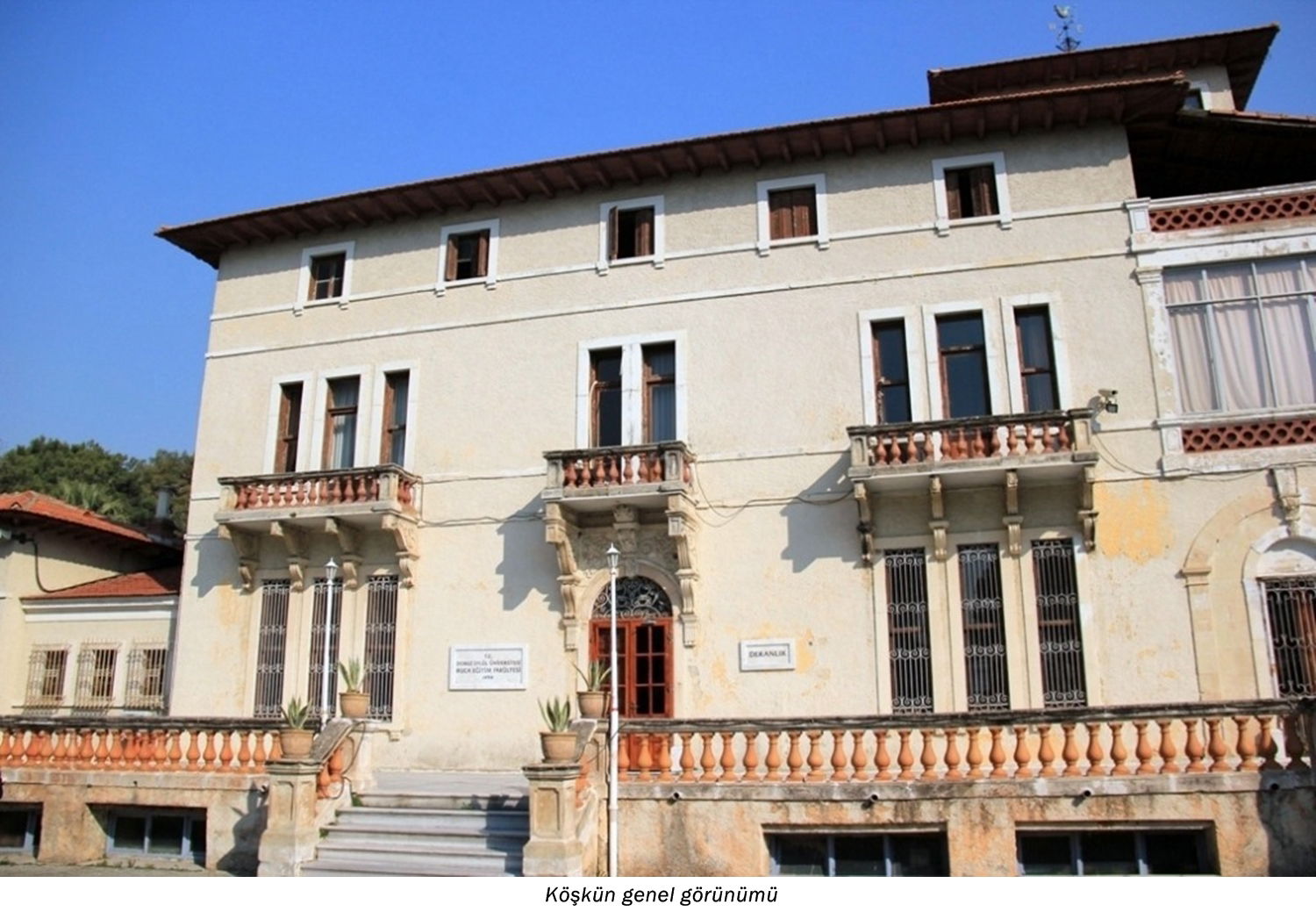
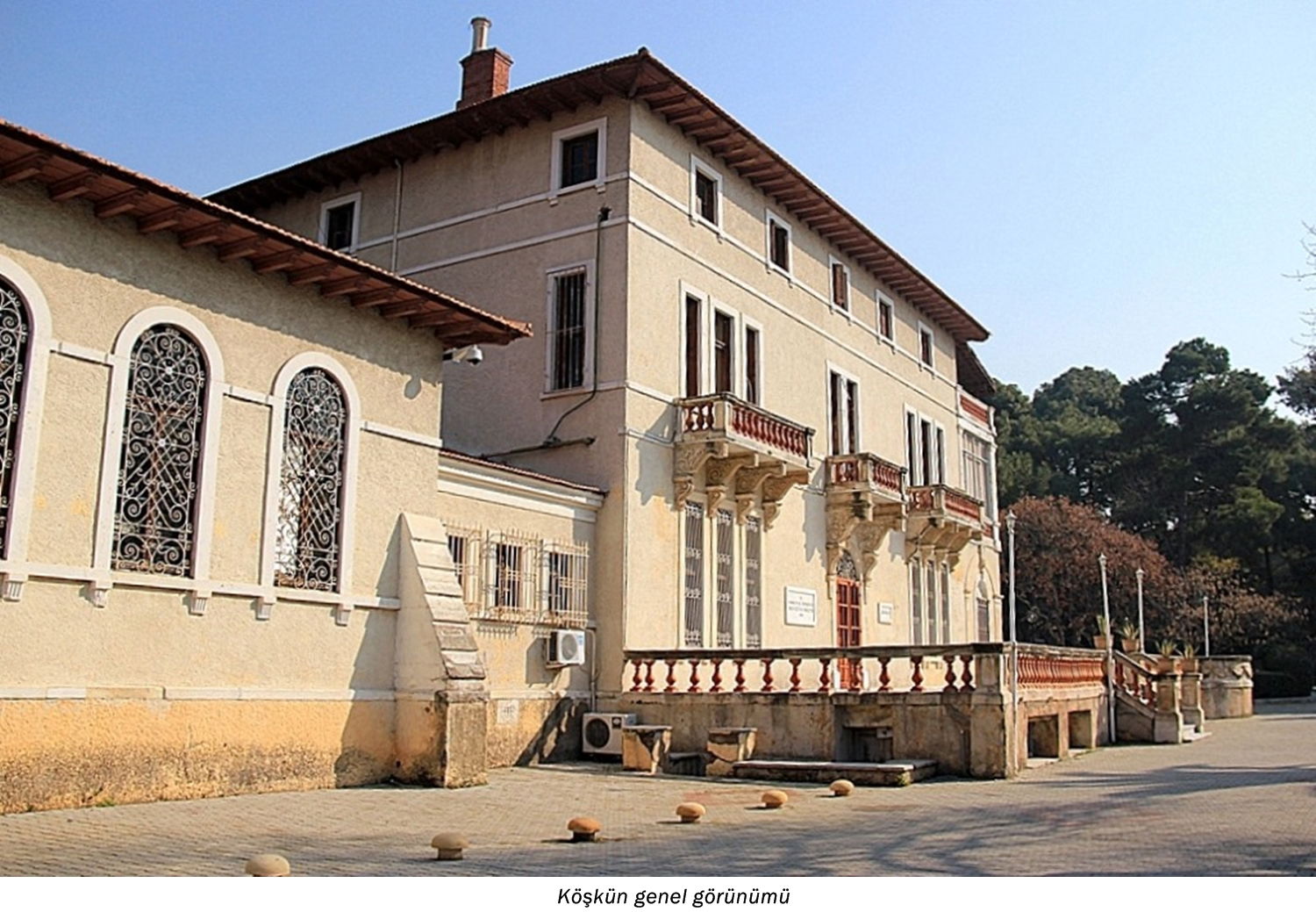
Rees Mansion is located in a large and beautiful campus belonging to Buca Faculty of Education. It is the largest historical structure in Buca. Although it was built between 1870 and 1887, the fact that it was built as a huge structure compared to the small village of Buca at the time also reveals the influence of the Rees family.
The Rees family is one of the Levantine families that left their mark in Buca. Originally from Wales, this family came from Manchester, the heart of the cotton and yarn trade. Thomas Bowen Rees comes to Izmir in 1853, while the Crimean War is ongoing, and plans to make a fortune from the paint trade. The family ventured into many different businesses. It was stated that after a while after coming to Turkey, they gave up the cotton business and turned to mining business, and then they gradually made a great fortune.
Their contributions to religious matters in Buca also show their influence in Buca. First, they had the stained glass windows in the Buca Protestant Church built, and then they donated the church's piano. The Rees family bought the land to the west of where the railway line ends, probably by paying large sums of money. They also had the stands of the hippodrome in Paradiso built. Another evidence that shows that they were interested in horses is the horse stud farms that still exist in the north of the land where their mansion is located.
Most sources show the construction date as 1890-1895. However, in a recently discovered painting, the mansion was depicted in 1887. Therefore, it is highly likely that the mansion was built in the 1880s. Stephanie Farkoh stated that the construction date of the mansion is "20th century". He expressed it as "just before the turn of the century". It is said that the family lived in the Alparslan House on İstasyon Street for a while.
Feyyaz Erpi states in his book that the Rees Mansion was built with quality architecture and workmanship. Rees Mansion was confiscated by Governor Rahmi Bey during the First World War. Afterwards, the mansion was given back. The Rees left the mansion permanently in the 1930s. It is known that they remained in residence for a while during and after the Second World War, but they were probably used temporarily. In addition, in the 1930s, the mansion was used by the Russo family for a while - probably as a tenant. For a while - probably in the 1940s - the Guiffray family lived there. In 1960, the mansion was transferred to the state and has been used as an educational institution since then.
– BALTAZZI MANSION –
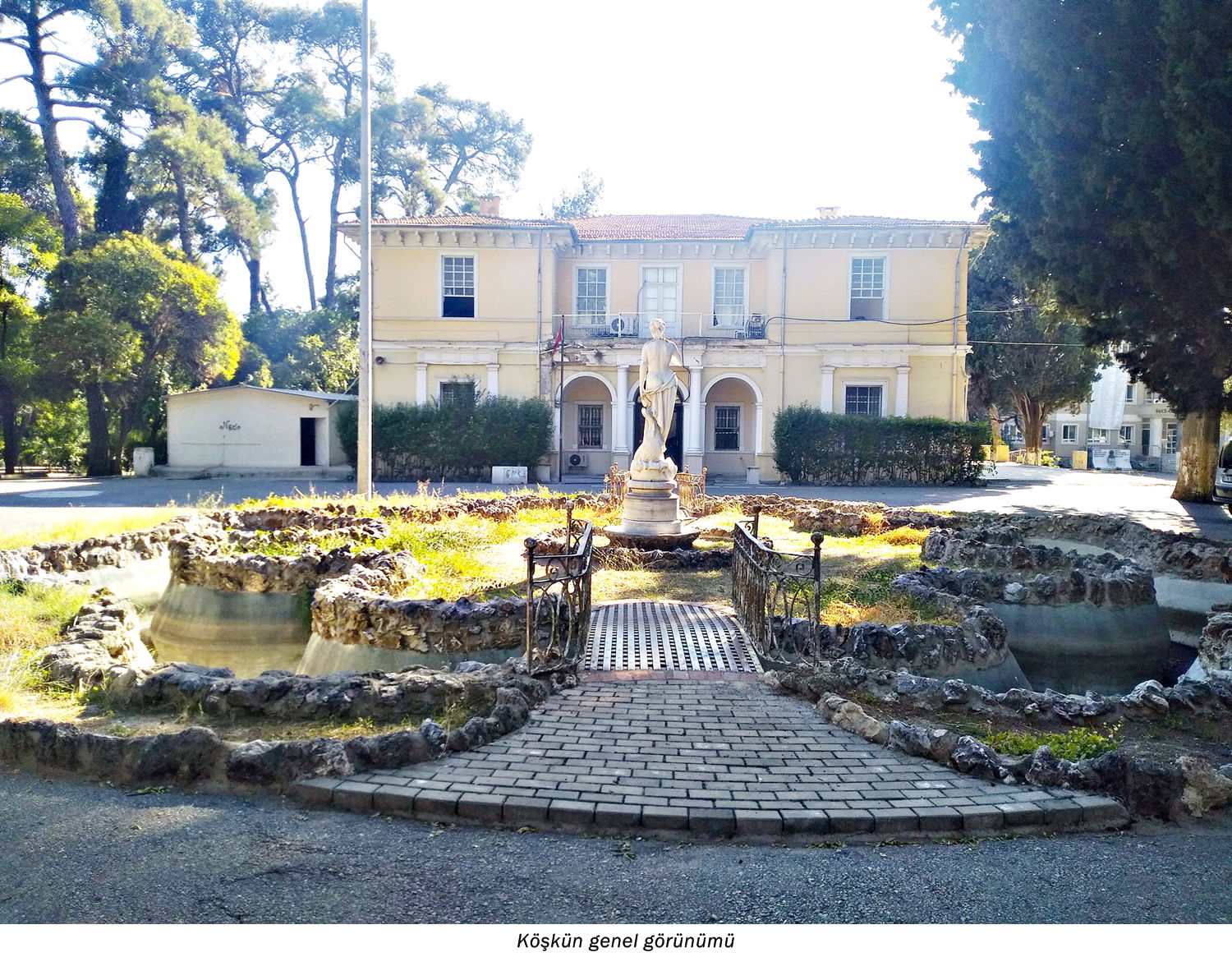
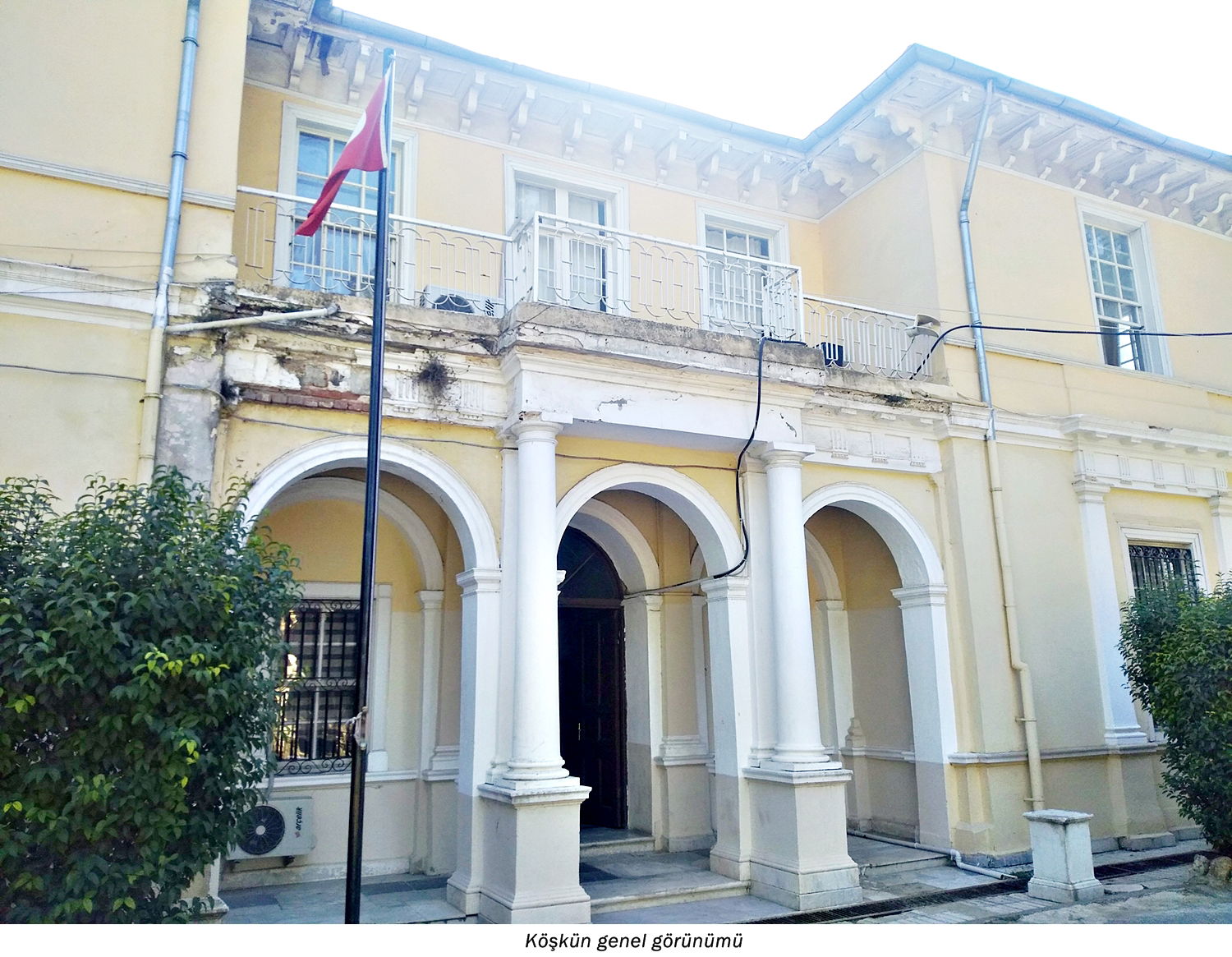
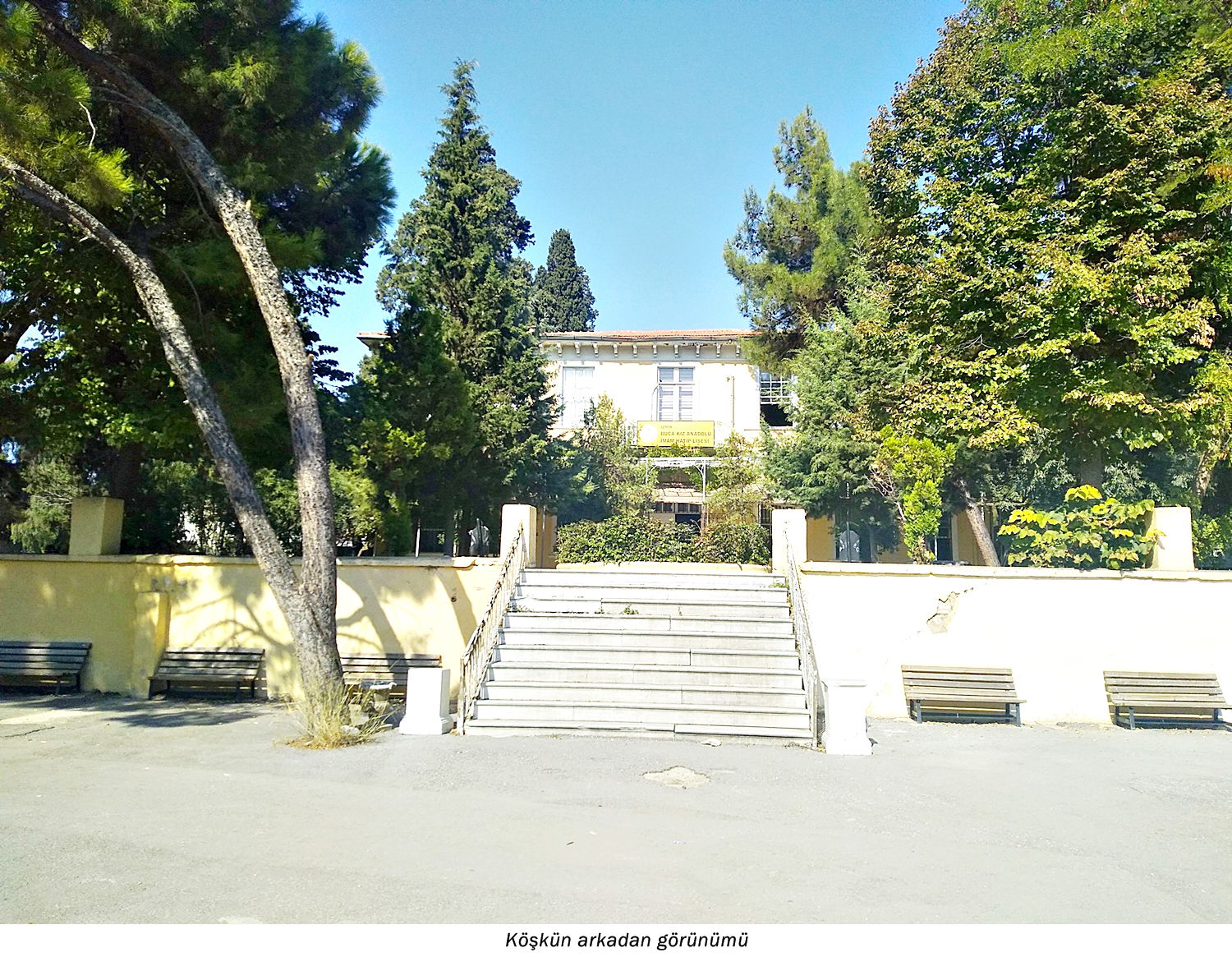
During the Demostanis Baltazzi period, the family settled in Buca and integrated with the local people, using their Greek ties. The first record in Buca about the Baltazzi family dates back to 1859. It is seen that Demostanis Baltazzi, who had the mansion built, married Marie Constantine Sevastopulos in Buca in 1859. It is estimated that they had the Baltazzi Mansion built around this time, in the 1850s. In this respect, Baltazzi Mansion can be said to be the second oldest mansion in Buca after the Hole Mansion. Its architect is John Turtle Wood, one of the famous architects of the period. In the 1890s, the mansion was sold to the Armenian Ispartalian family. The Ispartaliyan family is the family that had Istasyon Street built in Buca. For this reason, this street is also called Ispartalıyan Street. In the 1910s, the Italian government considered purchasing the Baltazzi Mansion. Italian Suciani, the director of the Ottoman Bank, was instructed to buy the mansion, but at that time there was a competition between Italy and Greece to take over the Aegean Region. In the end, Greece won the race and the mansion was purchased for 120,000 kaime on behalf of the Greek National Bank. The mansion was gifted to Greek Prime Minister Venizelos. Venizelos had the mansion allocated to orphan children from Izmir.
After Buca was captured by the Turkish Army in 1922, the mansion passed to the state. It is said that Mustafa Kemal Pasha wanted this place to be turned into a school. This place was converted into a secondary school and its well-kept garden was preserved for many years. However, in the following years, when it was converted into a high school, its garden began to deteriorate and the elegant building next to it burned down. New buildings were built on the south side. The original sculptures were painted with oil paints.
According to Feyyaz Erpi, the building has a unique style. He stated that European culture was dominant in the building. He says that the garden layout is arranged in the Latin European style. A copy of the Venus statue in the Garden still stands. The original is protected. According to Kararas, the Venus statue was built by the Armenian sculptor Papazyan. Since the Baltazzi family was very interested in art, there were many sculptures in the garden in the past.
Although it is used as an imam-hatip high school today, the mansion requires restoration. There have been attempts to steal the statues in the garden in the past. Considering that it is a mansion where both Sultan Abdülaziz and Atatürk stayed, it needs to be protected not only in terms of Turkish history but also Turkish/Islamic history.
– DE JONGH MANSION –
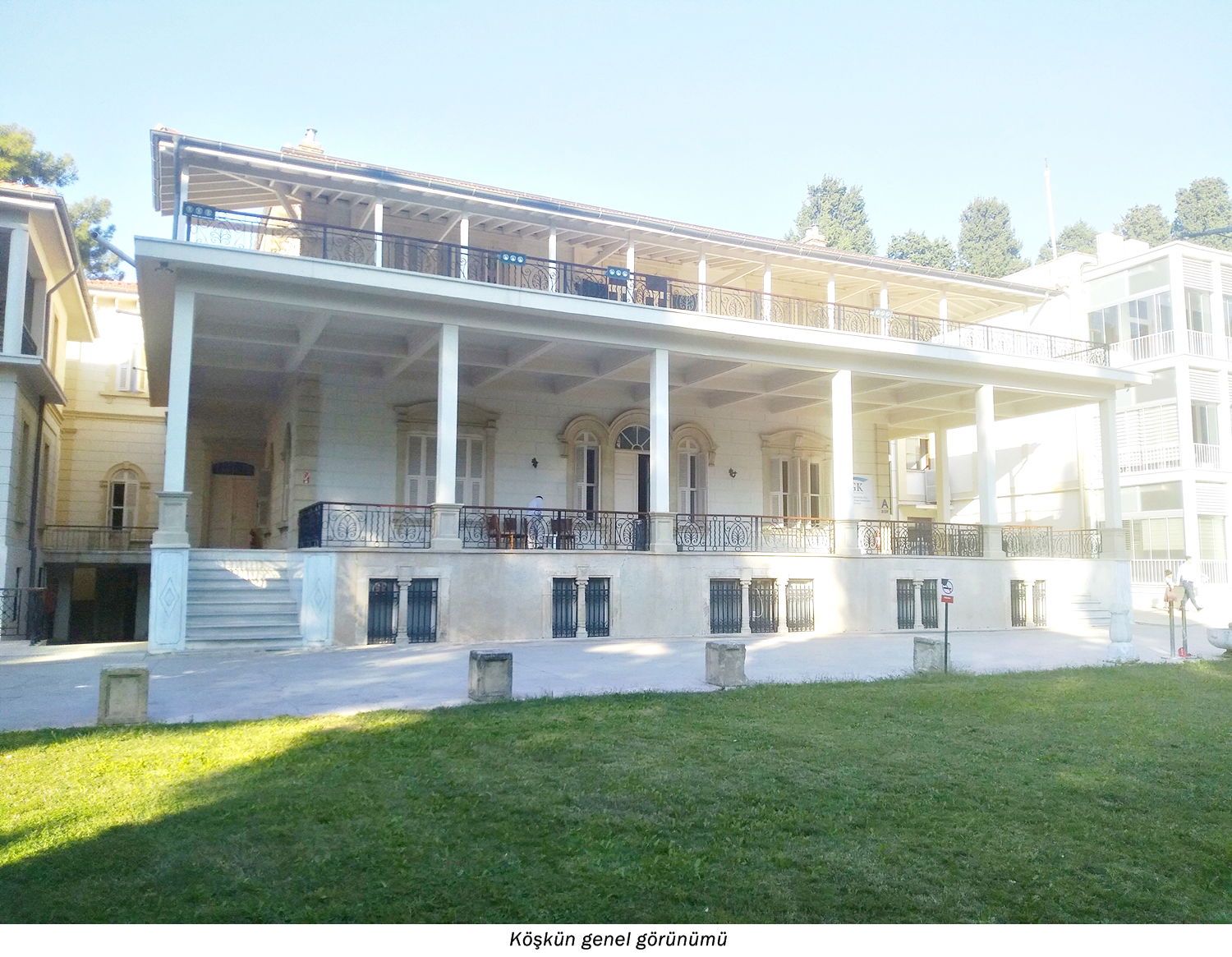
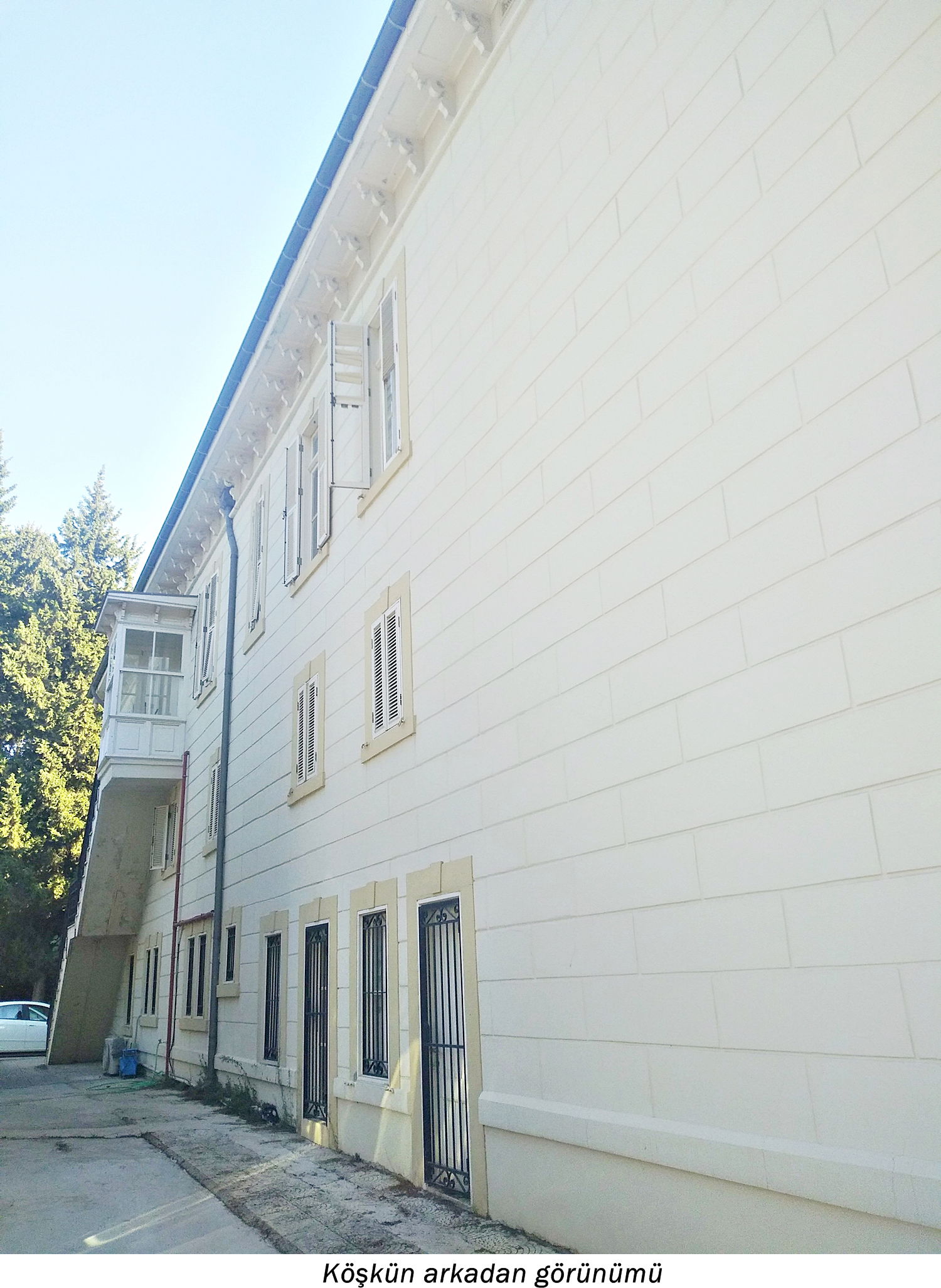
The De Jongh family is a family that came to Turkey earlier than the Rees and Forbes. There are individuals living in both Bornova and Buca. John Richard de Jongh, the first family member to come to Izmir, started business in Izmir in 1812 with the guidance of Robert Wilkinson, the Swedish and Danish consul of the time (died in Buca in 1822), and married Consul Wilkinson's daughter. The De Jonghs must have lived in Buca continuously since this time. This puts them among the oldest families in Buca. The family member who had the De Jongh Mansion built is John Richard de Jongh's grandson, Henry de Jongh. There is a common and incorrect information that the mansion was built in 1877. Henry de Jongh was only 15 years old on this date. Considering that the De Jongh family moved here in 1909 in the De Jongh family records, it can be said that the mansion was built in the early 1900s. Let us also say that the old Aliberti Mansion in Dokuzçeşmeler belonged to the De Jonghs in the past. The former home of the De Jongh family in Buca must be the Aliberti Mansion.
The De Jongh family went through difficult times in the following years. During the First World War, they moved to the place known as the 'mansion' and known as the Aliberti Mansion, to protect themselves from air raids. Later they returned home again. During the War of Independence, they lost two members of their family in Buca on September 10. Afterwards, they left Turkey and only one couple returned. The mansion was used as the German Consulate in 1927 - probably for rent. In 1928, the De Jonghs sell the mansion to the Sperco family and leave Turkey. The mansion, which remained under the ownership of the Sperco family until 1944, was sold to the state and started to be used as a sanatorium. It is also said that the mansion later passed to the Aliberti family for a while, but there is probably a mistake here too. The Alibertis were the owners of the house in Dokuzçeşmeler that formerly belonged to the De Jonghs. However, perhaps they also lived in De Jongh Mansion for a short time.
De Jongh Mansion was later transferred to the state and used as a sanatorium for a while. Today, it is used as Social Security Institution and unfortunately, it has lost some of its splendor with the two ugly buildings added next to it. Let's spare a few sentences here for the Fair Weather Club. There used to be a tennis club just southwest of the mansion land, and it was maintained by Marcel Icard, known as 'Monsieur Marsel' to the people of Buca, in the 1960s. In these years, some Turks also learned to play tennis thanks to the Levantines. It was later closed, demolished and there are apartment buildings in its place. All that remains is a row of cypress trees along the street.
While listing the features of the mansion, Feyyaz Erpi stated that it only looks like a rich villa, far from ambitious architecture. There is no rich interior space like in the Rees and Forbes mansions. He also mentioned that the main staircase inside took up more space than necessary and that there was a lighting problem in the building.
– RUSSO MANSION –
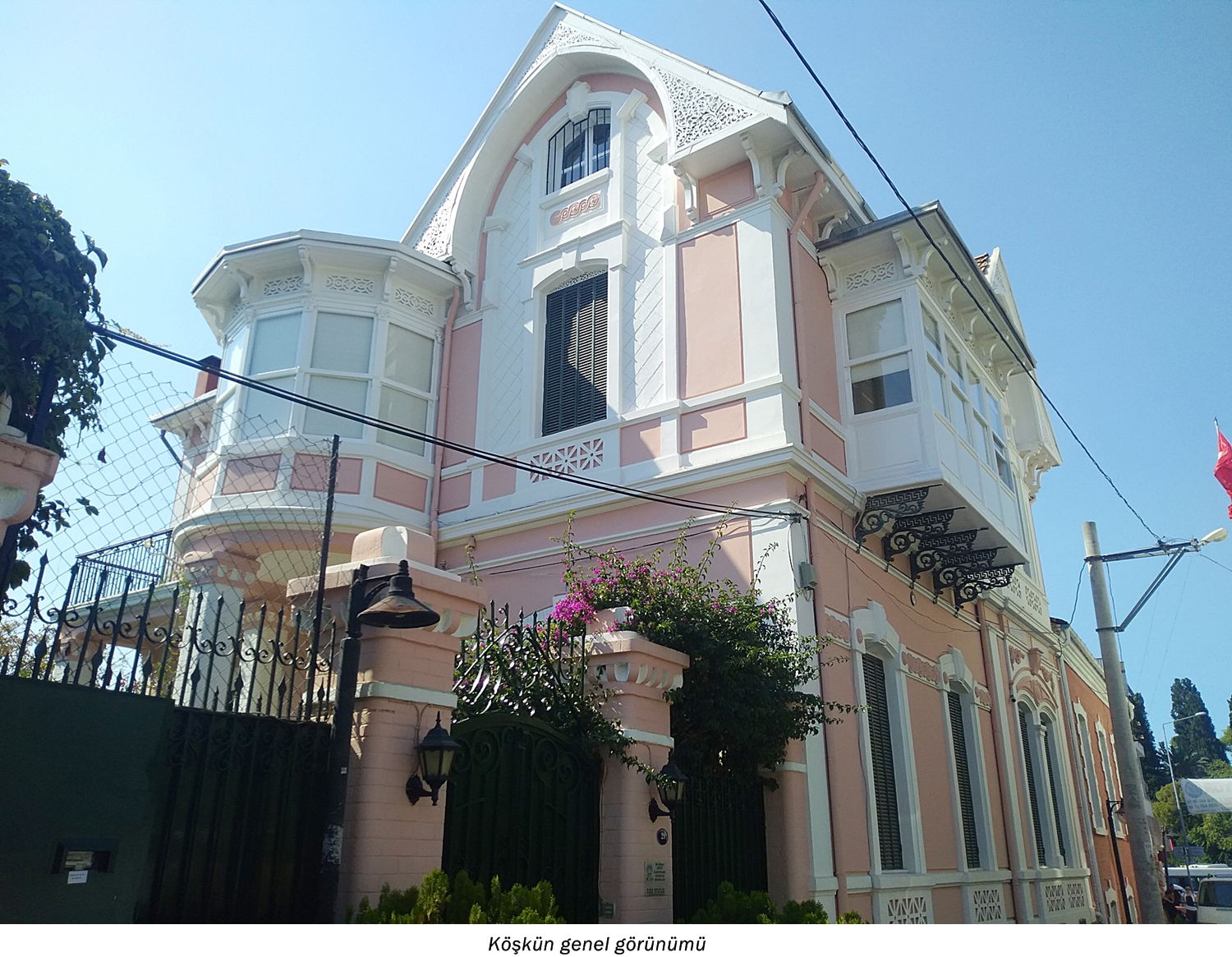
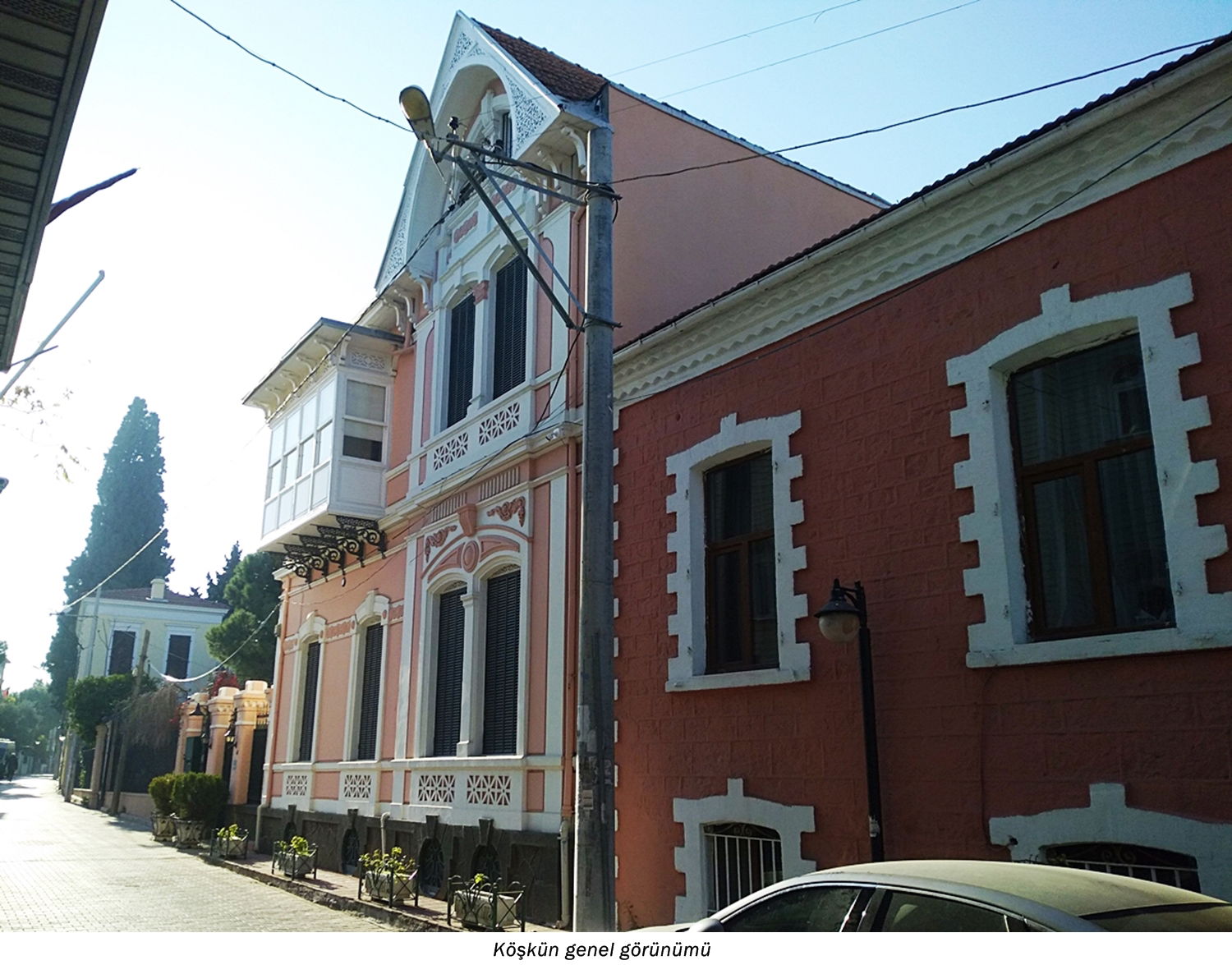
It is thought that the Russo Mansion was built in the early 1900s (1895 according to one source). The person who built the house is known as Christian Russo and he was born in 1874. Records show that Christian Russo's son was born in Buca in 1915. The house was later used by Berta Russo until 1945. Berta Russo is also the daughter of Gabriel Russo, the owner of the historical house used as Ziraat Bank in Heykel today. From this information, it can be estimated that the house remained in the Russo family continuously from its construction until 1945. Afterwards, it was also used by the Icard family for a while.
Today, it is one of the Buca houses that is noted not only for its aesthetic appearance but also for its well-kept appearance.
– DAVUT FARKOH MANSION –
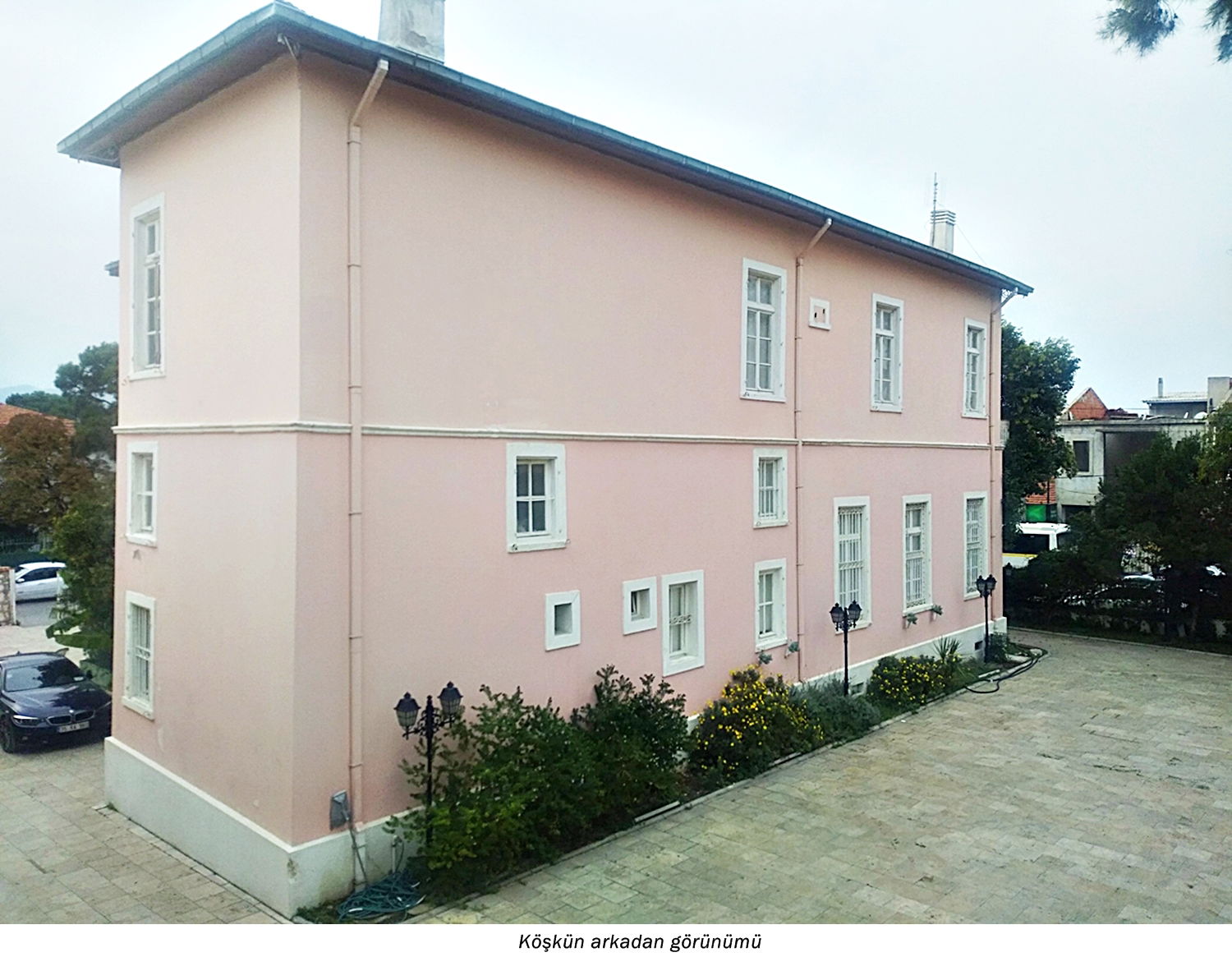
The construction date of Davut Farkoh Mansion is known as 1903. The Farkoh family was an Arab Christian family originally from Syria. They earned a lot of money by doing trade and maritime transportation in Izmir.
It is known that Stephanie Farkoh, the last member of the family, who spent almost all of her life in Buca, died in her home in Sculpture Square in Buca in 1986. This mansion was transferred to Buca Municipality in the 1930s. From this date onwards, it was used as a town hall until 2000. Afterwards, it started to be used as the municipal culture and arts center. This mansion is a great example of how historical buildings can be in good condition after being well cared for.
There was a bathhouse and other auxiliary buildings behind the mansion. Although the bathhouse no longer exists, the auxiliary buildings are still used as a library and restaurant.
– GAVRILI MANSION –
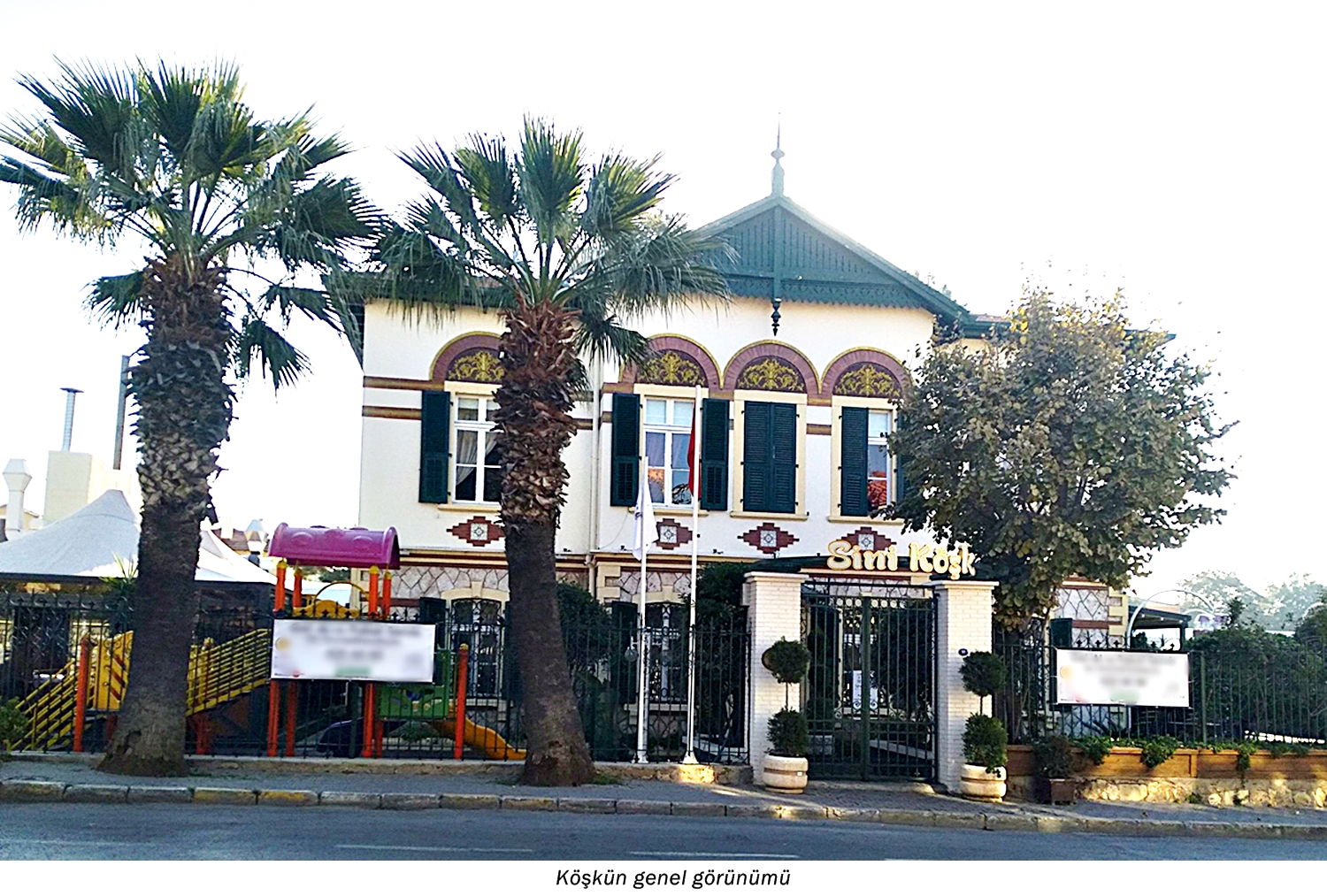
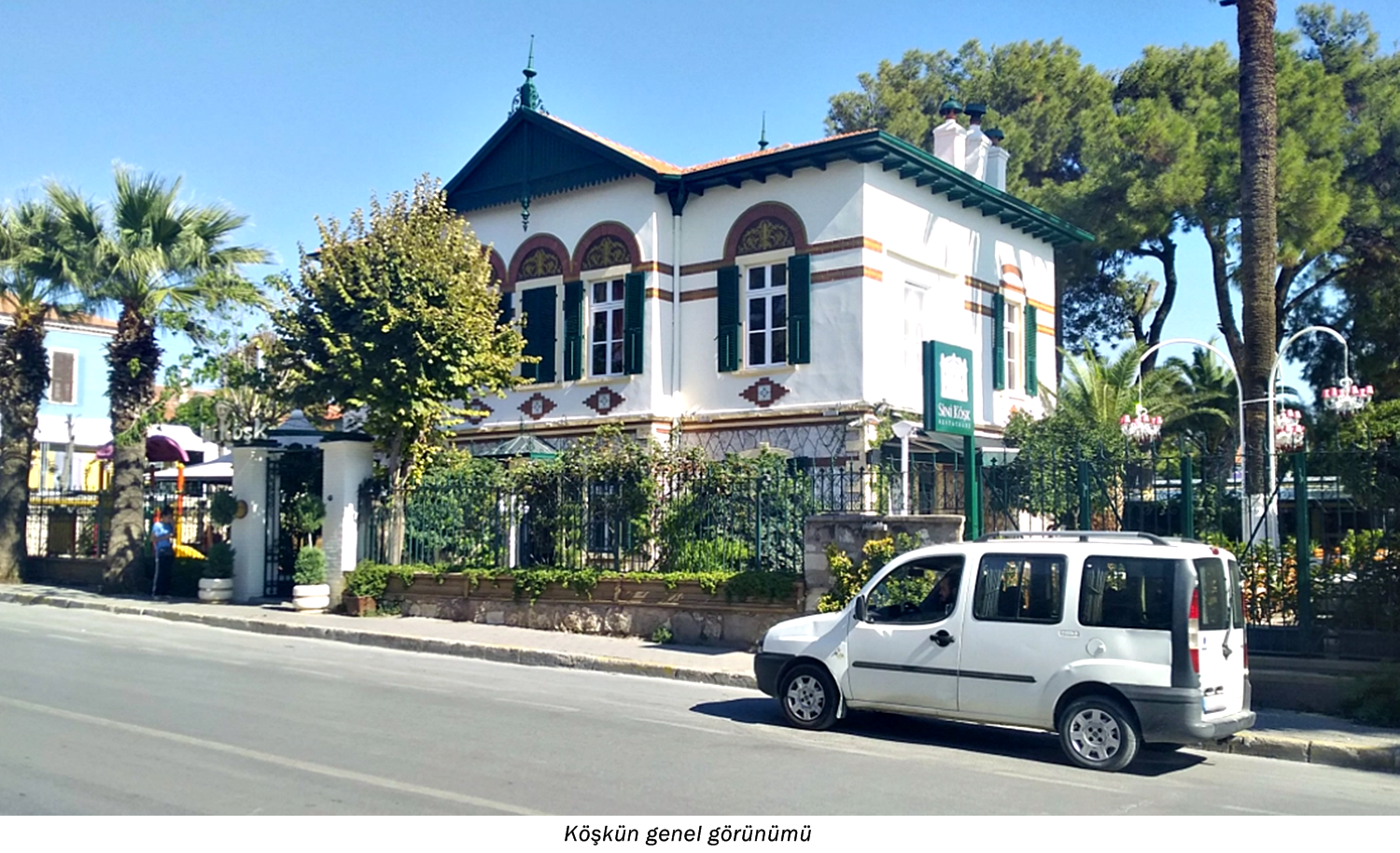
This mansion, which was built by the Greek Gavrili family in 1905, is used as a restaurant today. The Gavrili family was one of the rich Greek families of Buca and they had a pastry shop in Izmir. It is estimated that they left Buca after 1922. The head of the family is a Greek named Costa Gavrili, but there is no information about this person and his family. Afterwards, the Pengelley family lived here until the late 1930s. It is estimated that this family of Kernevek origin came to Buca from Wales in the 1850s. Alfred William Pengelley was working in the liquor business of the MacAndrews-Forbes Company in Nazilli and Aydın. The Pengelley family left Turkey in the late 1930s or early 1940s and went to Kenya. Until recently, the house was used as a guesthouse belonging to a private bank.
According to Feyyaz Erpi, the surface textures of the ground and upper floors, the brick frieze surrounding the mansion on four sides, the semicircular arches and pediments over the windows, and the rosette motifs under the windows are all features of this mansion.
– BARFF MANSION –

The construction date of this mansion, which belongs to the British Barff family, is 1902. In the following years, it was used as a restaurant and was named Eylül Köşk by the people of Buca. In 1907, former Queen Eugenia of France also stayed here for a few hours.
It is known that the Barff family has been living in Buca since at least 1890. They continued to live in Buca for many years and even became the only British family to stay in Buca in September 1922, when the war was at its most intense. Many Greeks took shelter in the Barff family's house and were kept safe by this family until they were transferred to Greece. The Barff family continued to stay in Turkey after the war. Records show that the Barff family was still living in Buca in 1956. It seems that they left Turkey in 1960. From here it can be said that they left Buca at the end of the 1950s, as one of the last representatives of the British tradition in Buca. Afterwards, the house passed to the Apaydın family, the owner of the soap company, and they used the house until they sold it to the state in the 1960s. Since then, it has been used as a cafe and restaurant, apart from being empty from time to time. Today, it is within the borders of Dokuz Eylül University.
According to Feyyaz Erpi, the openings on the front and back facades show a unique composition, while the side facade shows a Renaissance-like composition. The lace motif eaves and the pool in the front garden reflect a character specific to classic Buca houses. Only the pool and trees remain from the garden, which was known to be well-kept in the past.
– HANSON MANSION –
The building, which is still intact today, is used as a private school.
– HOLE MANSION –

It is the oldest known mansion in Buca. Pictures drawn in the 1840s were found. However, the first owners who built the house are unknown. It has two floors and the garden is accessed by a double-headed staircase. In this respect, it can be said that it contains a classical Buca mansion architecture. The known owners of the mansion during the Ottoman Period are Edwyn Cecil Hole, who was the British Empire vice-consul in Izmir at the time, and his family. The name of the mansion is also associated with this family. The Hole family stayed in Izmir during the First World War and was even interrogated during the war. They also stayed in Izmir during the Great Izmir Fire and tried to help British families leave Izmir safely. They probably never returned to Turkey after the war. The mansion was used as a kindergarten for a while. However, today it is empty and waiting for its savior.
– FRANCIS BLACKLER MANSION –
Although there is a two-storey section in the middle, the mansion itself is single-storey and round in shape. This brings to mind that the mansion may have first been built as a hunting lodge. The date drawn under the entrance door of the mansion reads "1855 FCB". It is understood from here that the mansion was built by American merchant Francis Chipman Blackler in 1855. The Blackler family came to Izmir in the 1830s. There is no information about when they came to Buca. The oldest record about Buca dates back to 1854. Francis Chipman Blackler's daughter Evelyn died in Buca, 1 month after she was born. It is understood from here that they lived in Buca for a while before having the mansion built. Francis Chipman Blackler himself died in Buca in 1875, and the mansion continued to be used by his sons for many years. Records show that one of his sons, William Blackler, was still living in Buca in 1936. His house was on Izmir Street, where Buca Park is today.
It is estimated that the Blackler family sold the mansion to the Italian Falbo family in the 1920s or 1930s after the war. After using the house for a long time, the Falbo family sold it to the Türker family in 1980 and left Turkey. The house has managed to preserve its large garden until today.
– LIPOVATZ MANSION –
Lipovatz Villa is the only three-storey historical building in Buca. It is estimated that the mansion was built in the first half of the 1800s. It is likely that this is the hotel used as the Alexander Hotel in Buca during the Ottoman Period. Afterwards, it passed to the Lipovatz family of Bulgarian origin, who were related to the Baltazzi. The Lipovatz family ran a soap factory in Izmir. They were also in the oil and tahini business for a while. They sold the mansion in 1955 and moved to Izmir.
Feyyaz Erpi described the building as "a structure completely foreign to Buca architecture". There are changes in the window and door parts, but it has still survived to the present day without much change.
– Additions –
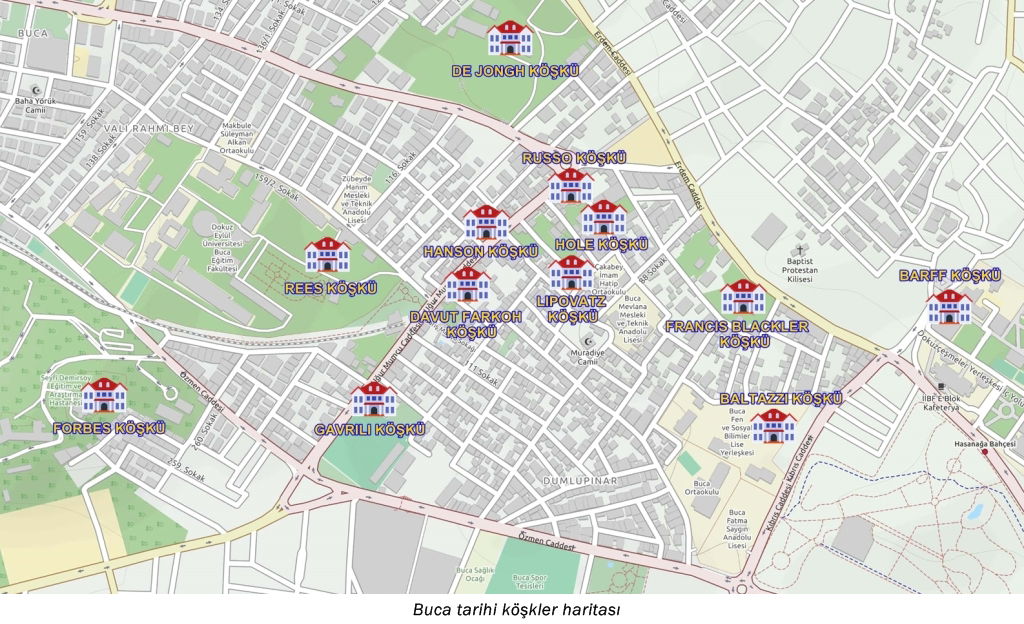
Name | Date of construction | First owner (birth-death) | Nationality | Profession |
Baltazzi | 1860s | Demosthene Emmanuel Baltazzi (1835-1900) | Italian | Merchant, archeology |
Barff | 1902 | Edward Dionysius Barff (1843-1920) | English | Merchant |
Davut Farkoh | 1903 | George Davut Farkoh (?-?) | Arab | Ship operator |
De Jongh | Early 1900s | Henry Richard de Jongh (1862-1935) | English | Merchant |
Forbes | 1908 | David Forbes (1868-1941) | Scottish | Licorice merchant |
Francis Blackler | 1855 | Francis Chipman Blackler (1823-1875) | American | Carpet merchant |
Gavrili | 1905 | Kosta Gavrili (?-?) | Greek | Merchant |
Hanson | 1876 | John Hanson (?-?) | English | Merchant |
Hole | Early 1800s | Edwyn Cecil Hole (1889-1976) | English | Consul |
Lipovatz | ? | Constantino Alexander Lipovatz (1898-1973) | Bulgarian | Soap merchant |
Rees | 1880s | Thomas Bowen Rees (1823-1899) | Welsh | Ship operator |
Russo | 1895 | Christian Maria Russo (1874-?) | Italian | ? |
List of Buca's historical mansions
This article was created by atalarimizintopraklari.com. All rights reserved. All or part of this article cannot be used in books, magazines or newspapers without citing the source.
